The U7Q PRO is a television that, after just a few minutes, sends a clear signal: "speed matters here." Hisense surprised us with how much has been packed into a device that doesn't cost a fortune. A refresh rate of 165 Hz in 4K, and even 288 Hz in Full HD – until recently, such numbers were reserved exclusively for top-tier gaming monitors. And here we have a mid-range television with almost a complete set of features for gamers, confidently throwing down the gauntlet to much pricier competitors. However, it doesn't stop at speed-related attributes. The U7Q PRO also boasts a very bright screen, reaching up to 1500 nits at its peak. Like every Mini-LED, it has its typical "quirks" associated with this technology, sometimes slightly exaggerating the image, but the overall visual effect remains very positive – especially in HDR content. It's also worth mentioning the Vidaa operating system – fast, intuitive, and equipped with features such as AirPlay, a voice assistant, and a web browser. While we won't find the full range of applications known from Android, the system performs really well in everyday use. So why is it "almost" ideal for gamers? The only missing feature is HGiG, which allows for precise adjustments of brightness levels in HDR games. This is a minor flaw, but it may be significant for console purists. Nevertheless, the U7Q PRO remains a very solid proposition – and a testament that Chinese manufacturers have not only caught up with their competition from Korea and Japan but in some aspects have even begun to surpass it.
- Matching (Score)
- Our verdict
- TV appearance
- Where to buy
- Contrast and black detail
- HDR effect quality
- Factory color reproduction
- Color reproduction after calibration
- Smoothness of tonal transitions
- Image scaling and smoothness of tonal transitions
- Blur and motion smoothness
- Console compatibility and gaming features
- Input lag
- Compatibility with PC
- Viewing angles
- Daytime performance
- Panel details
- TV features
- Apps
- Playing files from USB
- Sound
Hisense U7Q PRO vs Xiaomi S Pro 2026
Direct comparison
U7Q PRO / U78Q PRO
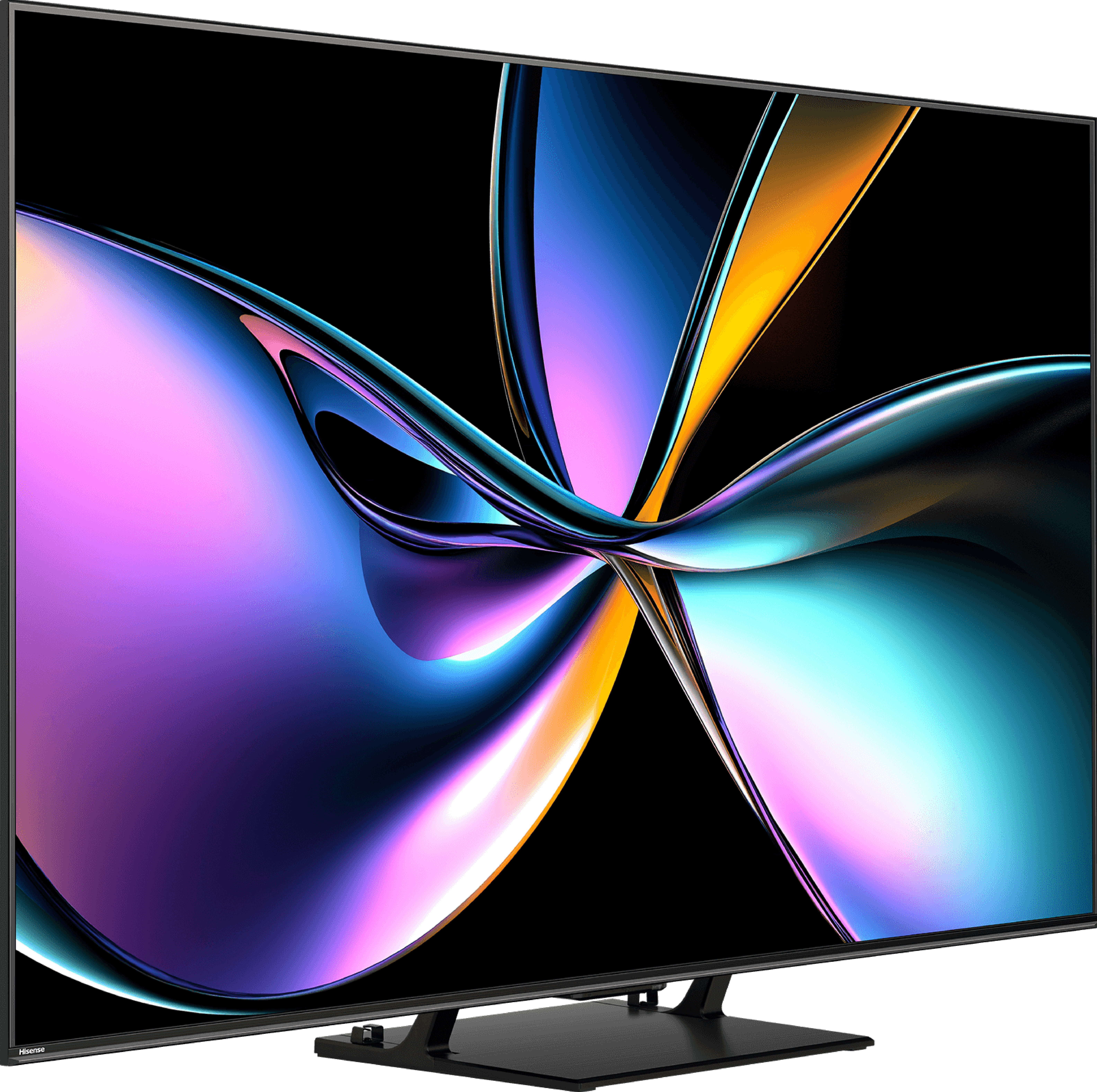
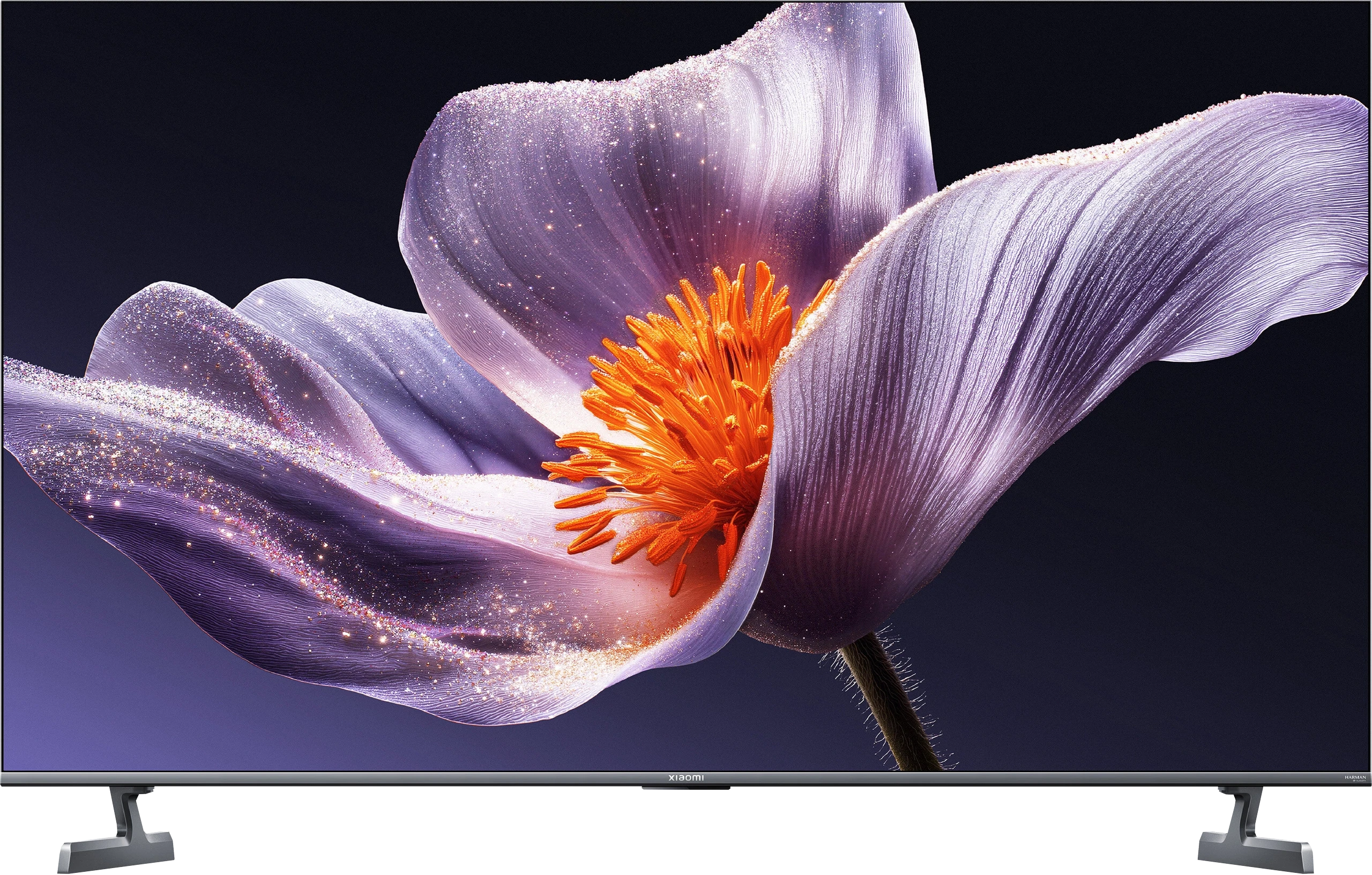
Panel type: LCD VA
Resolution: 3840x2160
System: VIDAA
Model year: 2025
Complete the survey to find out the result

Resolution: 3840x2160
System: Google TV
Model year: 2025
Complete the survey to find out the result

Overall rating
7.4
7.2
Movies and series in UHD quality
7.2
6.7
Classic TV, YouTube
7.2
6.3
Sports broadcasts (TV and apps)
6.7
6.4
Gaming on console
8.2
7.7
TV as a computer monitor
8.2
8.6
Watching in bright light
6.2
7.4
Utility functions
9.4
7.2
Apps
7.7
9.6
Sound quality
7.8
7.1
Complete the survey to find out what fits your preferences
Advantages
Excellent contrast and black levels - true Mini-LED backlighting with a VA panel (65")
Very good motion smoothness - 4K@165 Hz panel
Very high HDR brightness - even above 1500 nits
Ideal for gaming - Low input lag, VRR, ALLM, 4x HDMI 2.1, 288Hz at 1080p.
The Vidaa operating system has many features such as Airplay, USB recording
Outstanding quality of tonal transitions
Good black levels and contrast (SDR)
Very high peak brightness (great for a bright living room)
Complete package for gamers (144 Hz panel, HDMI 2.1, VRR)
Extremely low input lag in SDR mode (below 10 ms)
Surprisingly good, powerful sound (Branded by Harman Kardon)
Support for Dolby Atmos and DTS:X
Rich Google TV system (with AirPlay and Chromecast)
Proper compatibility with PC (clear fonts and 288Hz mode)
Outstanding value for the offered specification
Disadvantages
No support for HGiG
Average viewing angles
Missing apps on the VIDAA platform
Local dimming algorithms practically do not work in HDR content
Useless Dolby Vision Gaming mode (input lag approx. 100 ms)
Poorly implemented HGiG mode
Highly visible banding (colour banding) in dark scenes
Very poor upscaling and digital image processing
Google TV system can "struggle"
Our verdict
Is it worth buying the Xiaomi S Pro 2026? The answer to this question is quite complicated. Let's start with what is really great about this television. First of all, the Xiaomi S Pro 2026 has an excellent price-to-specification ratio. We get a Mini LED panel with very high brightness that performs exceptionally well in a sunlit living room. Additionally, it has a fast refresh rate of 144 Hz (and even 288 Hz) and a full package for gamers: two HDMI 2.1 ports, support for VRR, and remarkably low input lag (below 10 ms). If we mainly watch "regular" content and play games, this is truly a fantastic screen. Even the built-in 30W speakers are surprisingly good and support Dolby Atmos. Unfortunately, there is also a second, very problematic side to this model. In short: the software. We have the impression that Xiaomi has provided us with excellent "parts," but could not make them work together correctly. The biggest issue is the HDR mode – the primary reason for buying a television today. For unknown reasons, the television in HDR mode (HDR10, Dolby Vision) does not manage its dimming zones well. As a result, the black that should be deep becomes gray or navy blue, like in a standard LCD television. There are also other software faults such as the terrible implementation of HGiG or the fact that the Dolby Vision mode for gamers is useless due to the enormous input lag (100 ms). Additionally, the television has very poor capabilities for digital image processing. So how can this be summarised in terms of price? In its price range, the Xiaomi S Pro 2026 crushes the competition in terms of specifications. Other televisions at this price point are usually basic LCD models without dimming and often only with a 60 Hz panel. The question is therefore: what is more important to you? If you are simply looking for a very bright and inexpensive television for watching TV during the day and gaming, and you are willing to calibrate it – you will be very satisfied with it. However, if you are looking for a television to enjoy stunning HDR in films and games right out of the box, you will be terribly disappointed with this model. In that case, in our opinion, it is better to pay a bit extra for a basic OLED television or a more refined Mini-LED model from the competition.
TV appearance


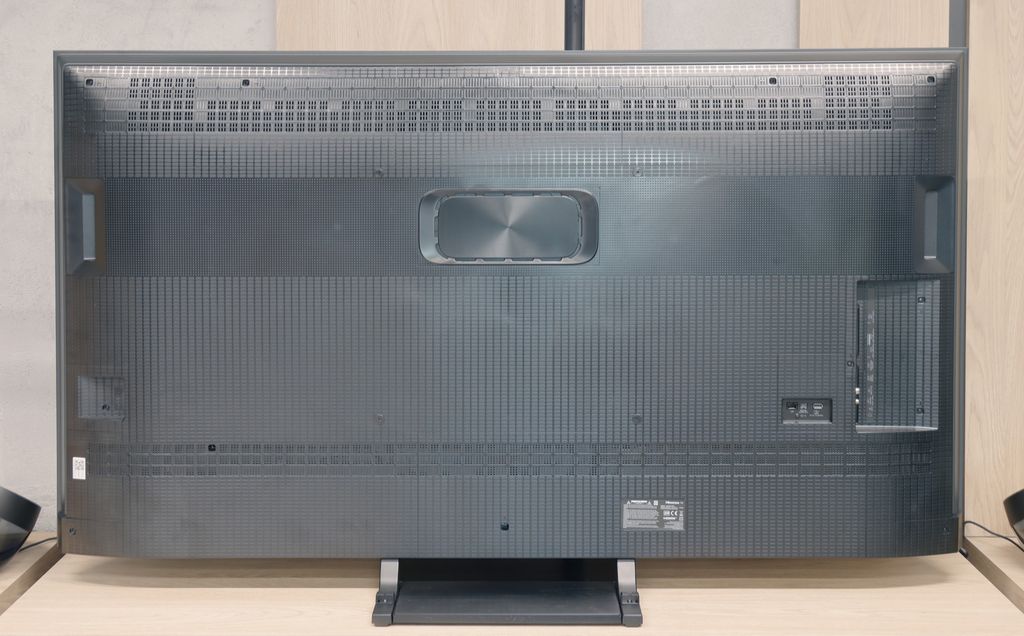
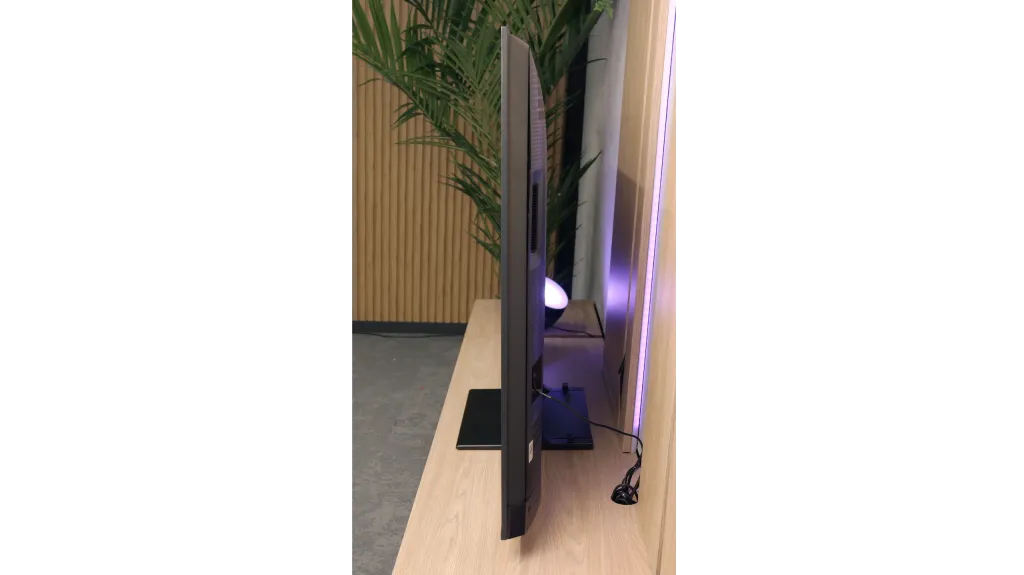


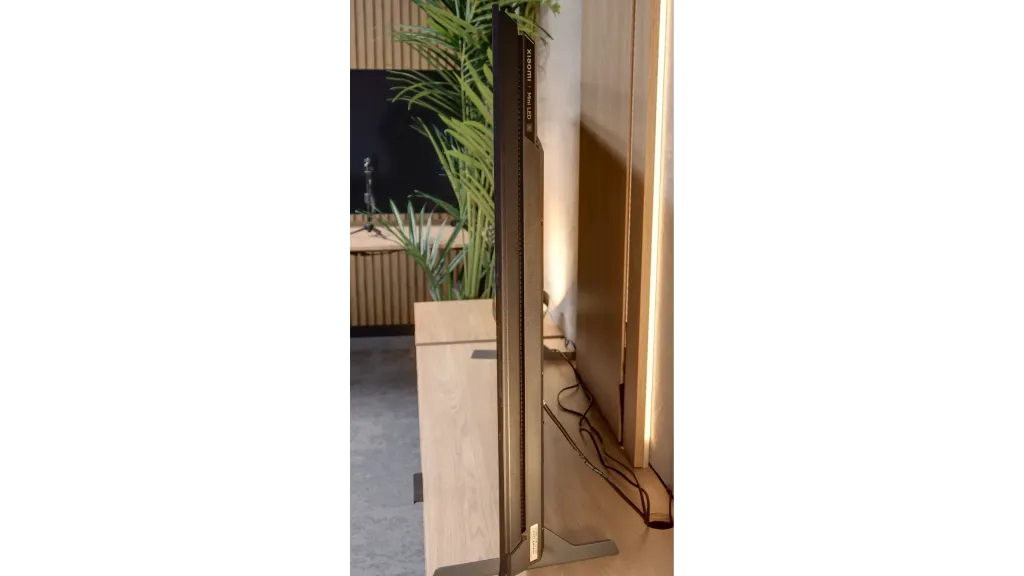

Contrast and black detail
8/10
7.4/10
Local dimming function: Yes, number of zones: 560 (20 x 28)
Local dimming function: Yes, number of zones: 532 (28 x 19)
Contrast:

Result
340,000:1

Result
62,850:1

Result
42,000:1

Result
11,100:1

Result
7,500:1

Result
1,001,650:1

Result
52,600:1

Result
17,900:1

Result
17,200:1

Result
10,150:1
Halo effect and black detail visibility:


Hisense U7Q PRO is a mini-LED television with a VA panel and – in the 65-inch version we tested – 560 local dimming zones. It's worth noting from the outset that this number varies depending on the size – larger screens will have more zones, while smaller ones will have fewer accordingly. However, regardless of this, the dimming system works really well here.
The contrast performs exceptionally well for the price range in which this model sits. In optimal conditions, the U7Q PRO can achieve results close to six-figure values, which not long ago was reserved for equipment at a much higher level. In practice – in scenes like the one from the film Oblivion – the image looks stunning. With slightly dimmed light in the room, it can be difficult at first glance to distinguish this television from organic screens. Of course, it is still an LCD with local dimming, so compromises are unavoidable. In more demanding scenes, where there are many small light sources, the U7Q PRO tends to dim too aggressively. Instead of a slight deterioration in black levels – some details that should be visible disappear. This is a side effect of the algorithm that strongly adheres to the rule of "black should be black," even at the cost of subtle image elements.
But nevertheless – contrast is one of the stronger points of this model.
Let's get to the point, which is what is most important in the Mini LED panel: black levels and contrast. The Xiaomi S Pro 2026 is built on a VA matrix, which already promises deep blacks from the start. Adding to that is the Mini LED backlighting with a very large number of local dimming zones. In the 65-inch variant we tested, we counted as many as 532. This is a solid number that should provide precise control over the backlighting. It should be noted that this number is proportional to the size – by choosing the smaller 55-inch variant, there will be correspondingly fewer zones, and in larger models, more.
So, how does the black level perform on the S Pro 2026? The answer is complex.
Overall, it is really quite good, and we see a clear improvement compared to the problematic model from 2025. As you can see from our measurement charts, the results are sometimes spectacular. In most of the film scenes we measured in SDR (standard dynamic range), the contrast could be confidently described as very good and even comparable to designs three times as expensive. Well, it could be... and here we come to the paradox of this model. The issue is how the television manages the zones in scenarios other than SDR. As soon as we feed the television a higher-quality signal, such as an HDR series or Dolby Vision from streaming platforms (Netflix, HBO Max or Disney+), something strange happens. We have the undeniable impression that the television suddenly... forgets that it has been equipped with local dimming zones at all. As can be seen in our video below, the black levels in such scenes resemble more shades of dark grey or navy blue. Additionally, there is a subtle flickering of the entire screen. This is a level we would expect from televisions entirely devoid of a local dimming system. It seems that Xiaomi decided to fix one, but key, flaw of last year's 2025 model over the course of a year. And they succeeded – we no longer have the annoying "zone disco", the image is stable. It's just a shame that when consuming content of the highest quality (HDR), this entire advanced system becomes completely useless.
HDR effect quality
6/10
6.3/10
Luminance measurements in HDR:

Result
1129 nit

Result
323 nit

Result
721 nit

Result
267 nit

Result
736 nit

Result
809 nit

Result
526 nit

Result
1033 nit

Result
469 nit

Result
718 nit
Scene from the movie “Pan” (about 2800 nits)


Scene from the movie “Billy Lynn” (about 1100 nits)


Static HDR10


Dynamic: Dolby Vision
Dynamic: Dolby Vision


HDR luminance chart:
Xiaomi S Pro 2026
HDR luminance
Hisense U7Q PRO
HDR luminance
U7Q PRO is truly a bright television. In synthetic tests, it achieved over 1500 nits, which is an outstanding result for this price range. Such brightness – at least in theory – allows for HDR content to be displayed as intended by the creators, even in more demanding scenes with strong lighting. In practice, it is often very good, but not always perfect. In bright scenes with large areas – like the test chart with intense sunlight from the movie "Pan" – the U7Q PRO makes a huge impression. It can almost dazzle with its brightness, which is definitely an advantage in the context of HDR content. Unfortunately, it doesn't always manage to maintain this when many small bright details appear on a dark background. In such moments, the local dimming algorithms choose to dim some bright elements to maintain good black levels – and the side effect is that some details simply disappear from the frame. This is a classic compromise in mini-LED televisions – and the U7Q PRO is no exception. However, with such a large number of dimming zones, one could have hoped for a slightly more mature algorithm responsible for their control. Fortunately, the overall perception of HDR content is decidedly positive. The U7Q PRO is not only bright but also colourful, thanks to the PFS LED (QLED) coating, the coverage of the DCI-P3 colour palette is at 95%, while BT.2020 is around 73%.
When it comes to HDR quality, the Xiaomi S Pro 2026 is undoubtedly a very bright television. On our synthetic measurement patterns, we were able to generate peak brightness of around 1400 nits. This result is not only very good but truly spectacular, considering the price of this model. However, as we always emphasise, for our editorial team, measurements and the experiences from the content viewed on a daily basis - from films and series - are more important. So let's analyse how the Xiaomi performs with film material. The result is, unfortunately, quite mixed. When very bright scenes appear on screen, the S Pro 2026 really shows its full potential and can achieve a real 800-1000 nits in bright elements. Moreover, even smaller objects can "burn" the eyes - in scenes from the film Sicario 2, small metal elements of the helicopter were truly vivid. The problem is that - and here the story comes full circle back to our contrast assessment - in such scenes we cannot count on absolutely cinematic black. In our opinion, this compromise is too great; high visibility of details in bright areas should not come at the cost of such a significant boost to black levels. And although the HDR effect itself can make a stunning impression here, it is essential to remember that when very challenging, mixed scenes appear on screen, we might feel a slight disappointment. Exactly the one we mentioned in the previous paragraph regarding issues with dimming in HDR mode. As a consolation, it is worth adding that the S Pro 2026 has been equipped with an additional PFS filter (similar in function to a QLED layer), which effectively broadens the colour gamut coverage. As a result, measurements showed DCI-P3 coverage reaching up to 94%. This gives us confidence that in most colourful scenes, the image will appear rich and appropriately saturated.
Factory color reproduction
6.2/10
4.1/10


Factory Mode
After calibration


Factory Mode
After calibration
We tested the U7Q PRO in the best possible picture mode offered by this model – Filmmaker Mode. And indeed, this mode performs the best in terms of colour reproduction. However, that doesn't mean it's perfect. In our test unit, both in SDR and HDR content, the image had a slightly cooler tone. The white balance was skewed towards blue, giving the overall impression of being a bit "colder". It may not be glaring, but it is definitely noticeable – especially on white backgrounds, which seemed slightly bluish rather than neutral. Additionally – as we mentioned earlier – the television has a tendency to slightly brighten and oversaturate the image, which is also confirmed by the gamma and EOTF graphs. All this together means that without calibration, the image can appear somewhat unnatural – too cool, with slightly exaggerated dynamics. Therefore, we decided to carry out our own calibration – and you can see its effects and graphs below.
Of course, all our measurements were carried out in "Film" mode, which is typically the best and most accurate choice we get straight out of the box. It needs to be said plainly: although it is the best mode, it is still very far from ideal. Firstly, the television has a clear tendency to impart a cool, bluish tint to the image – this is due to a poorly set white balance. Additionally, there is the issue of how the S Pro 2026 manages its brightness straight out of the box, which results in an overly vivid image. These two flaws contribute to truly significant colourimetric errors (Delta E). In HDR content, they were able to exceed our anticipated error scale of "10" by twofold (meaning values close to 20). As a reminder – the threshold for perceivable error by the human eye is a Delta E value of around 3. Results at the level of 20 indicate that the image significantly deviates from what the director intended.
Color reproduction after calibration
7.5/10
7.2/10




Thanks to the calibration, we managed to tame the white balance in SDR and HDR content. In the case of SDR materials, the effect is really very good – the image becomes neutral, cohesive, and simply pleasant to take in. Everything looks as it should.
HDR performs a bit worse. Although the white balance appears correct and the image overall gains in naturalness, unfortunately, the delta E errors remain noticeable. Why? Because Hisense does not give us full control over how the television manages brightness in HDR mode with the U7Q PRO model. This is where the limitation comes into play. When we look at the EOTF curve for HDR content, we can clearly see what we mentioned earlier – at the beginning of the graph, there is a distinct drop, meaning the television darkens the smallest areas more than it should. On the other hand – the brightest elements can sometimes be overly bright. As a result, some details get lost, others are too aggressive, and overall control over brightness does not always match what we are trying to achieve during calibration.
Does the image look better after calibration? Definitely yes, in terms of colour. But when it comes to managing brightness in HDR, we have to accept that the Hisense U7Q PRO will do it in its own way.
So how does the S Pro 2026 perform after our calibration procedure? We have to admit that after calibration, the television becomes a really very pleasant device for watching everyday content. As you can see in the graphs, in HD (SDR) materials, both white balance and gamma values have been brought to nearly perfection. Most importantly, colourimetric errors have become practically unnoticeable to the human eye. In this scenario, the S Pro 2026 is simply an excellent television that, after professional calibration, can provide a lot of enjoyment from watching. However, it is worth clearly noting – our efforts have not helped much in 4K HDR mode. Despite the calibration, the television still interprets the image quite strongly "in its own way," which is clearly visible in the measurement of the EOTF curve (brightness tracking). It’s a bit of a shame, as it shows that the problem lies not in the panel itself, but in the software. Underdeveloped image management algorithms in HDR content can, unfortunately, rule out this television for many more discerning users.
Smoothness of tonal transitions
9.5/10
6.9/10












The U7Q PRO handles tonal transitions really well. Colours blend smoothly, without any banding, stripes or strange artefacts. Even in more challenging scenes that typically expose any imperfections – there was nothing to criticise here. The image simply looks clean. Gradients – both coloured and grey – are smooth, nothing tears, nothing distracts. This is one of those elements that you don’t pay attention to while watching… certainly not in the case of the U7Q PRO.
Let us now turn to the analysis of tonal transitions, that is, the fluidity with which the television can render transitions between closely related shades. In the case of the Xiaomi S Pro 2026, the image that emerges from this is distinctly ambivalent. On the one hand, we have bright gradations. When scenes with a blue sky or other smooth transitions in the light areas of the image appear on the screen, the S Pro 2026 handles them exemplary. They look perfectly smooth, with no visible artefacts.
Unfortunately, the situation changes dramatically as soon as dark scenes take the stage on the screen. Frankly speaking – they look really poor. Instead of a smooth tonal transition in the darkness, the screen very clearly shows the joins of colours and unappealing "stepping" of the gradients. This is very noticeable in darker films or games and can effectively ruin the viewing experience.
Image scaling and smoothness of tonal transitions
7.8/10
4.5/10
Smooth transition function

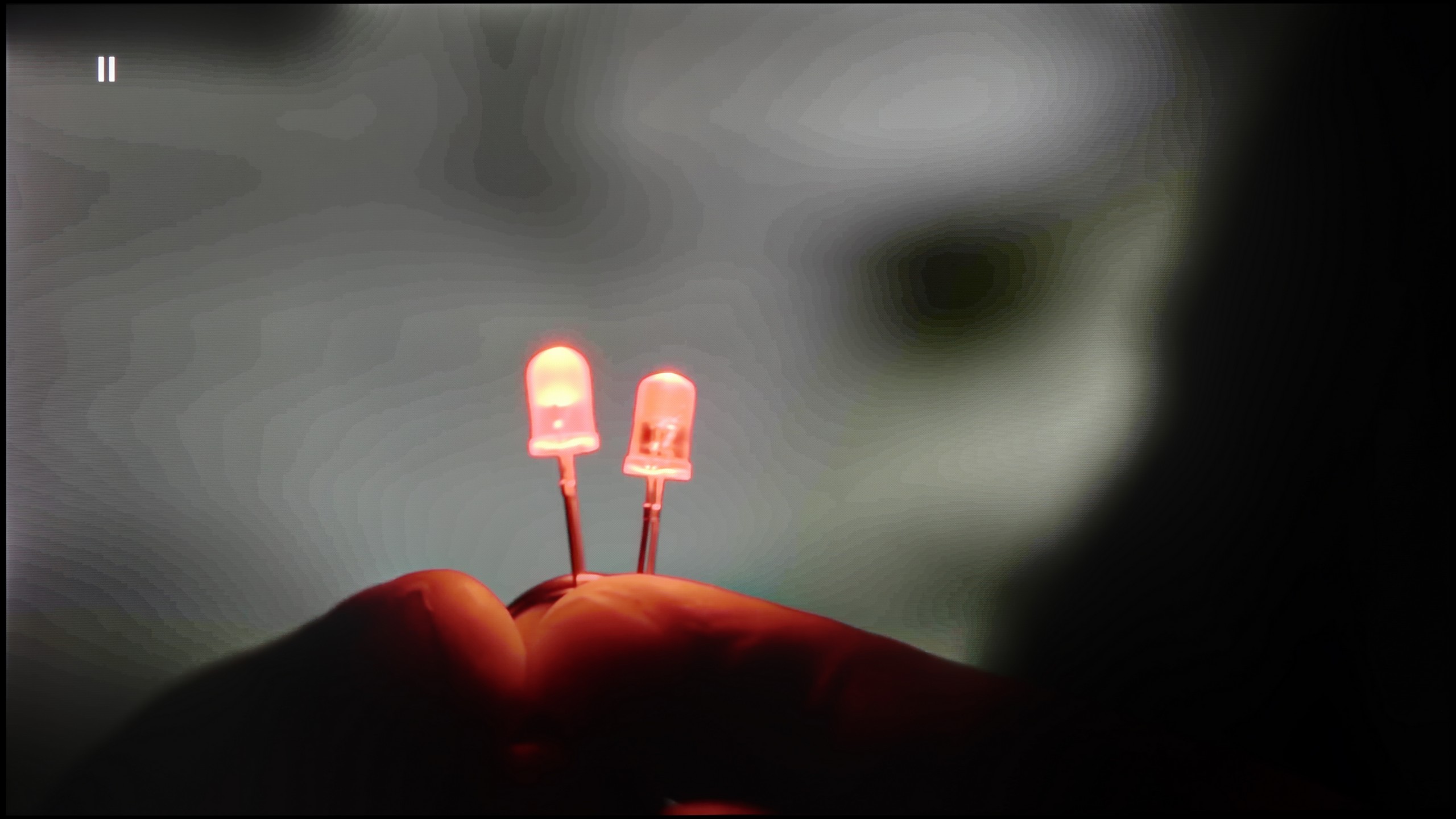
Image without overscan on the SD signal


If someone happens to come across older materials where the colour banding issue occurs – Hisense has a solution for that. In the U7Q PRO, we find a function called "Smooth and Gradient Image". Set to the "Medium" level, it works really well – removing most issues with gradation while not smoothing out the entire image, like blurring in Photoshop. 😉 Film grain remains, details do not disappear – this is exactly how it should work. Well done on the implementation!
As for upscaling weaker materials, it is simply good. It is not at the level of the most expensive televisions with advanced upscaling, but older content looks good. There is minor aliasing at very low resolutions, but this is completely normal and hard to avoid. On the plus side – even with the oldest materials, there is no overscan effect, the image is neither cropped nor artificially stretched.
Let's start with the issue we raised in the previous paragraph: can the television actually fix the problem of dreadful tonal transitions in dark scenes? Theoretically, yes – in the menu, we find a feature with the promising name "Colour Contour Removal." Well, "theoretically." Unfortunately, in practice, this setting – regardless of which of the three power levels is chosen – yielded absolutely no real results. So we are dealing with a feature that, in practice, only exists in the menu. Moving on to the quality of upscaling (scaling the image from a lower resolution to 4K), unfortunately, we have more bad news for you. The S Pro 2026 performs very poorly at this task. Interestingly, the phenomenon of "overscan" (slight cropping of the image) is not a major issue here. The fact is that the television simply displays a very raw, unprocessed image. Its attempt to upscale the signal to a higher resolution looks simply lacklustre and lacks any form of "intelligent" improvement. There is no denying it – the entire digital image processing is the real Achilles' heel of this model.
Blur and motion smoothness
7.1/10
7.5/10
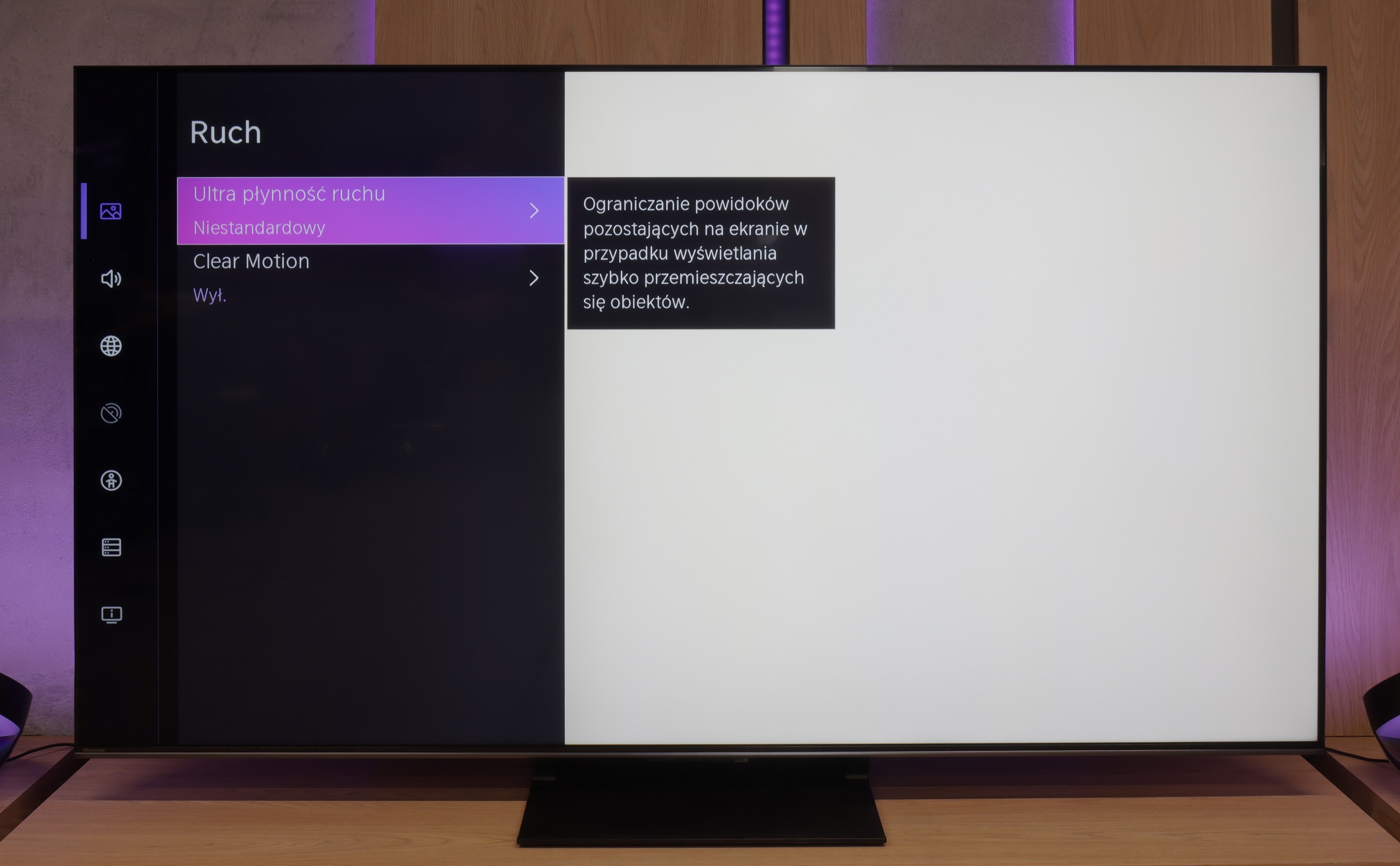
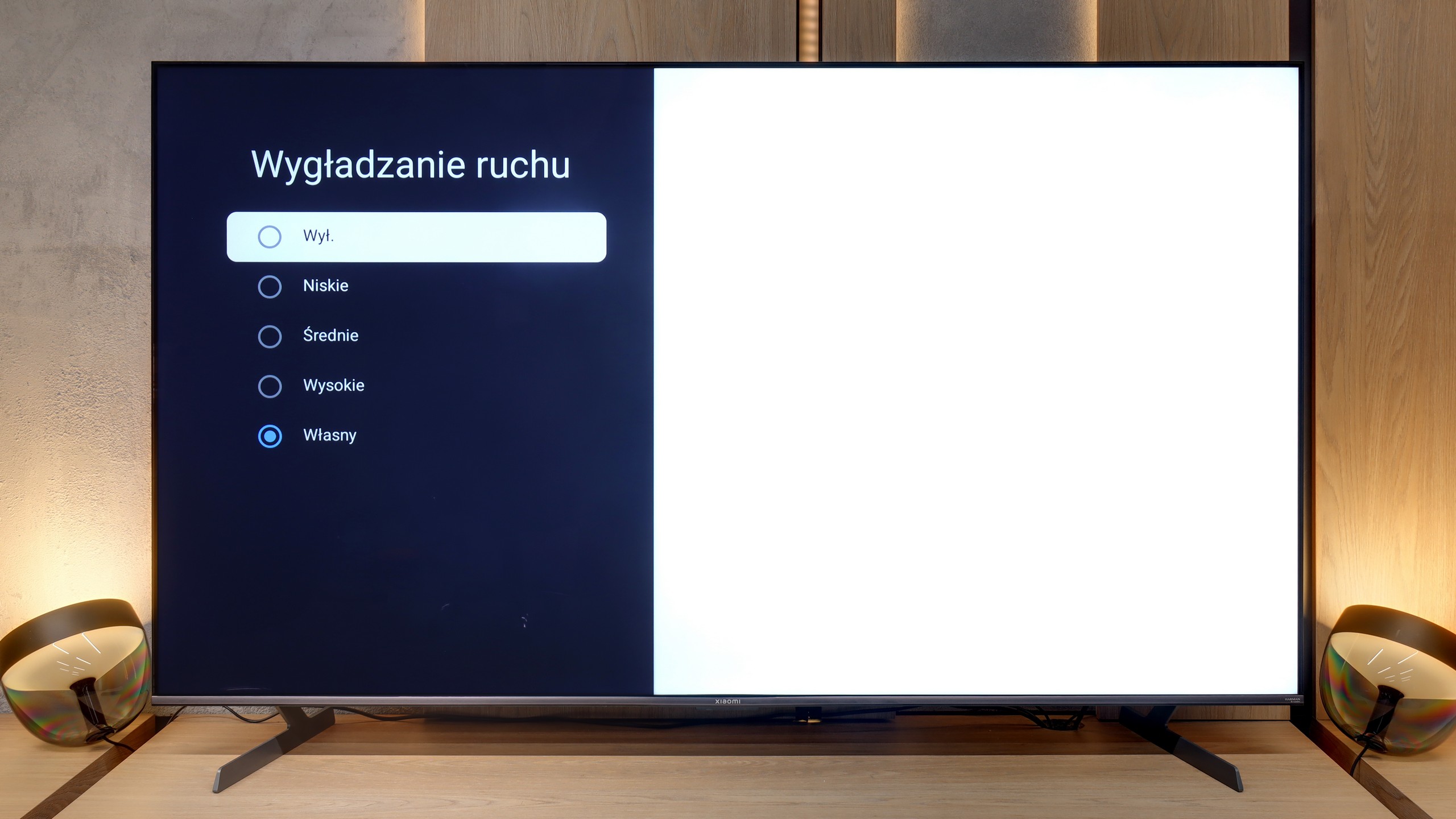
Blur (native resolution, maximum refresh rate):






Blur (BFI function enabled):



Smużenie (1080p 288Hz):



Smużenie (1080p@288Hz):



“Speed” – this word came up most often during our tests of the U7Q PRO. The television is equipped with a 165 Hz panel, which is impressive in itself – especially since we are talking about a model in the mid-range price category. Of course, PC gamers will benefit the most from its full capabilities, but even with everyday viewing, it's clear that this is a fast and efficient panel. Like most modern televisions, the U7Q PRO can also enhance the fluidity of films that were originally recorded at 24 frames. In the menu, we find a slider that allows us to adjust the effect to our own preferences – from a more cinematic look, with subtle motion, to stronger smoothing with the characteristic “telenovela effect.”
On paper, the S Pro 2026 specification looks impressive. The television is equipped with a native 144 Hz panel, with the ability to display images at up to 288 Hz in a dedicated gaming mode. These are amazing results, but what interested us most, in the context of everyday use, was how the television handles motion blur and how the image looks at 120 Hz. After all, this is the frequency used by consoles like the PlayStation 5 and Xbox Series X/S, and it is desired by sports fans. Generally, the panel "holds up". The matrix is sufficiently fast to meet these challenges, and objects displayed at native 120Hz fluidity are shown correctly. As for the software, the television is equipped with motion smoothing technology; however, with a key caveat – it works only for input signals up to 60 Hz. This means it is primarily suitable for traditional television, films, and series. Thanks to this, we can adjust the fluidity of the image to our own preferences – from a very smooth, "theatrical" approach to setting the slider to "zero" and maintaining a fully cinematic character.
Console compatibility and gaming features
8.5/10
8.2/10
- ALLM
- VRR
- VRR range48 - 288Hz48 - 144Hz
- Dolby Vision Game Mode
Yes, high input lag
- Correct implementation of HGIG
- 1080p@120Hz
- 1440p@120Hz
- 4K@120Hz
- Game bar
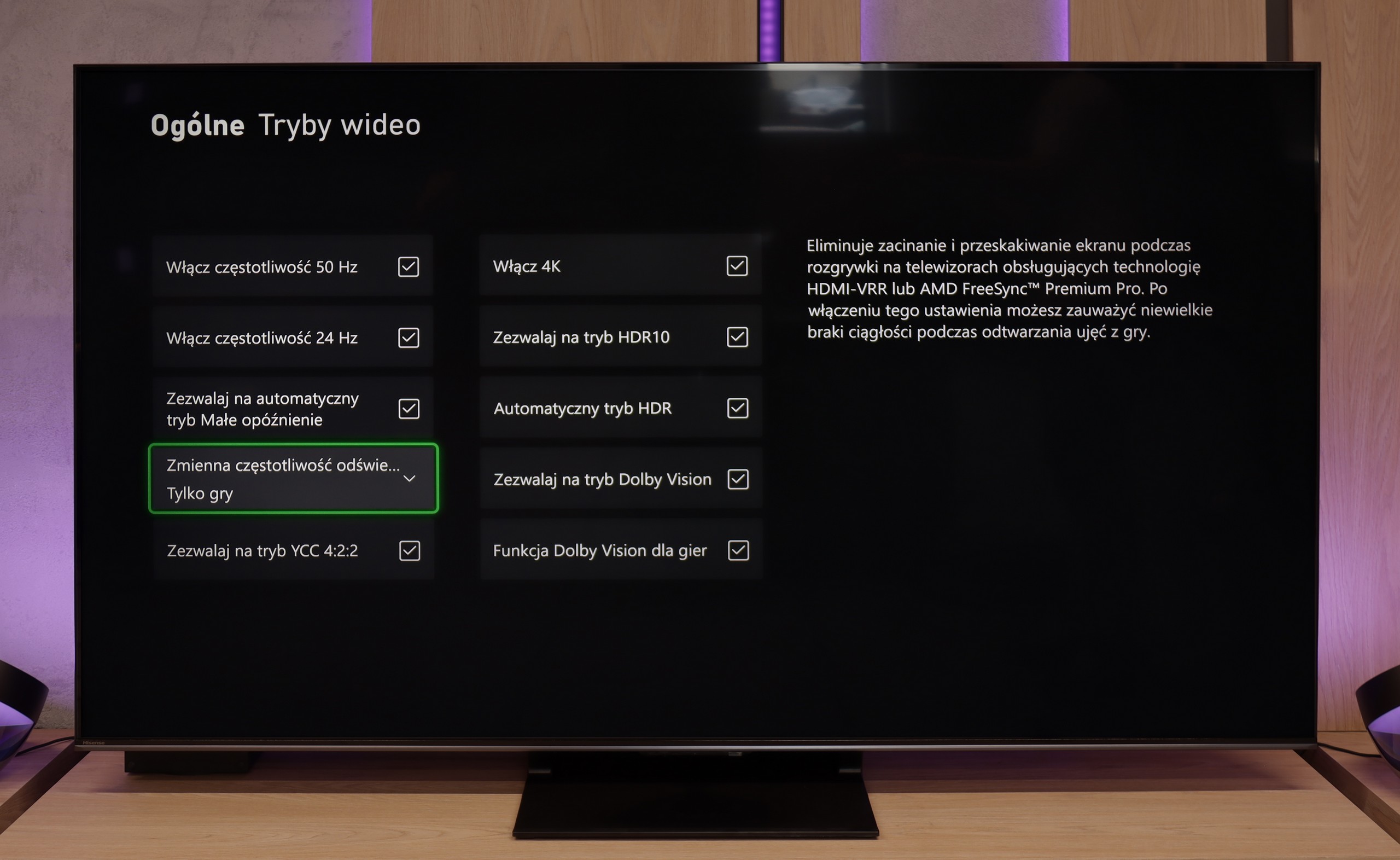
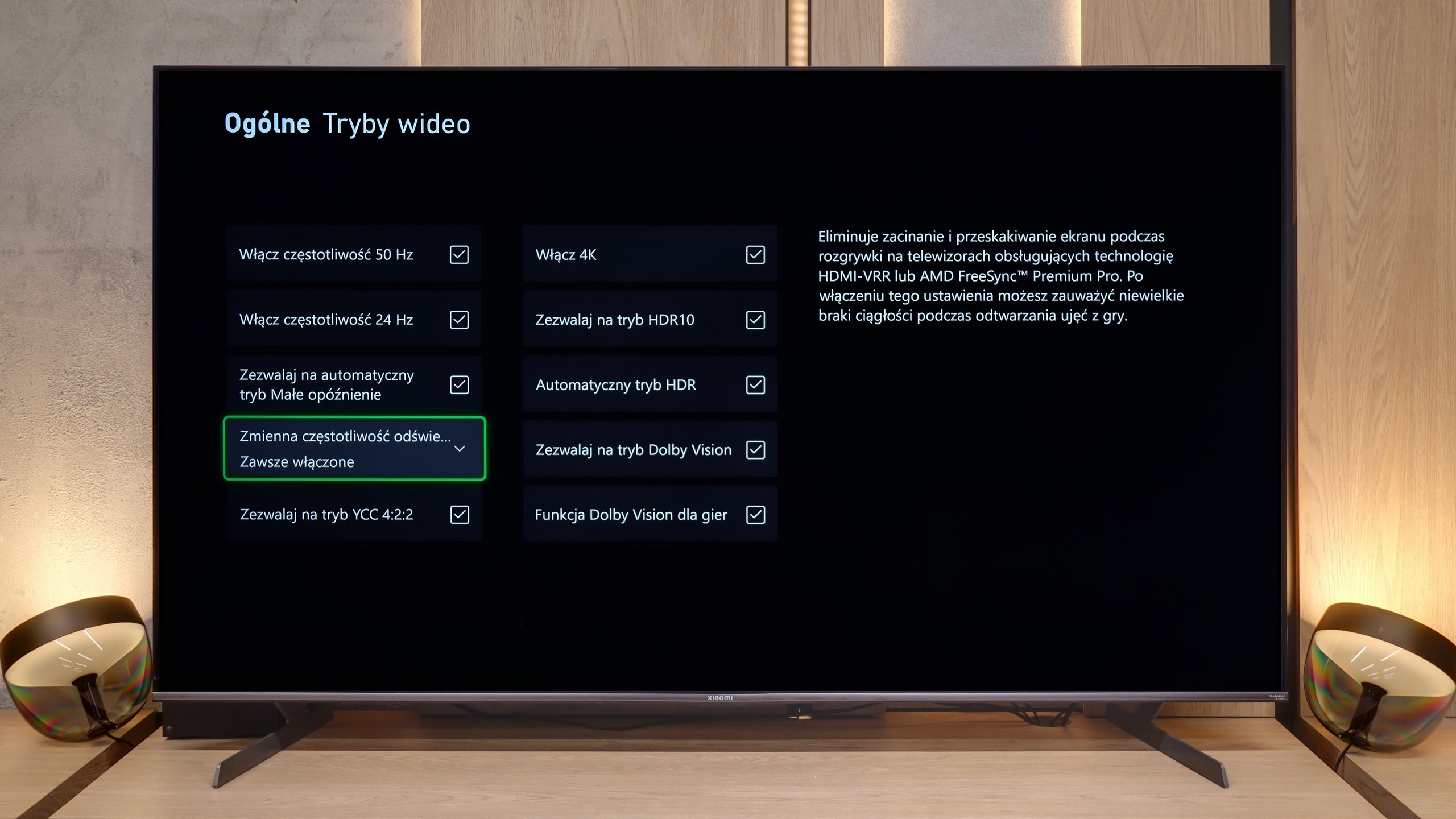

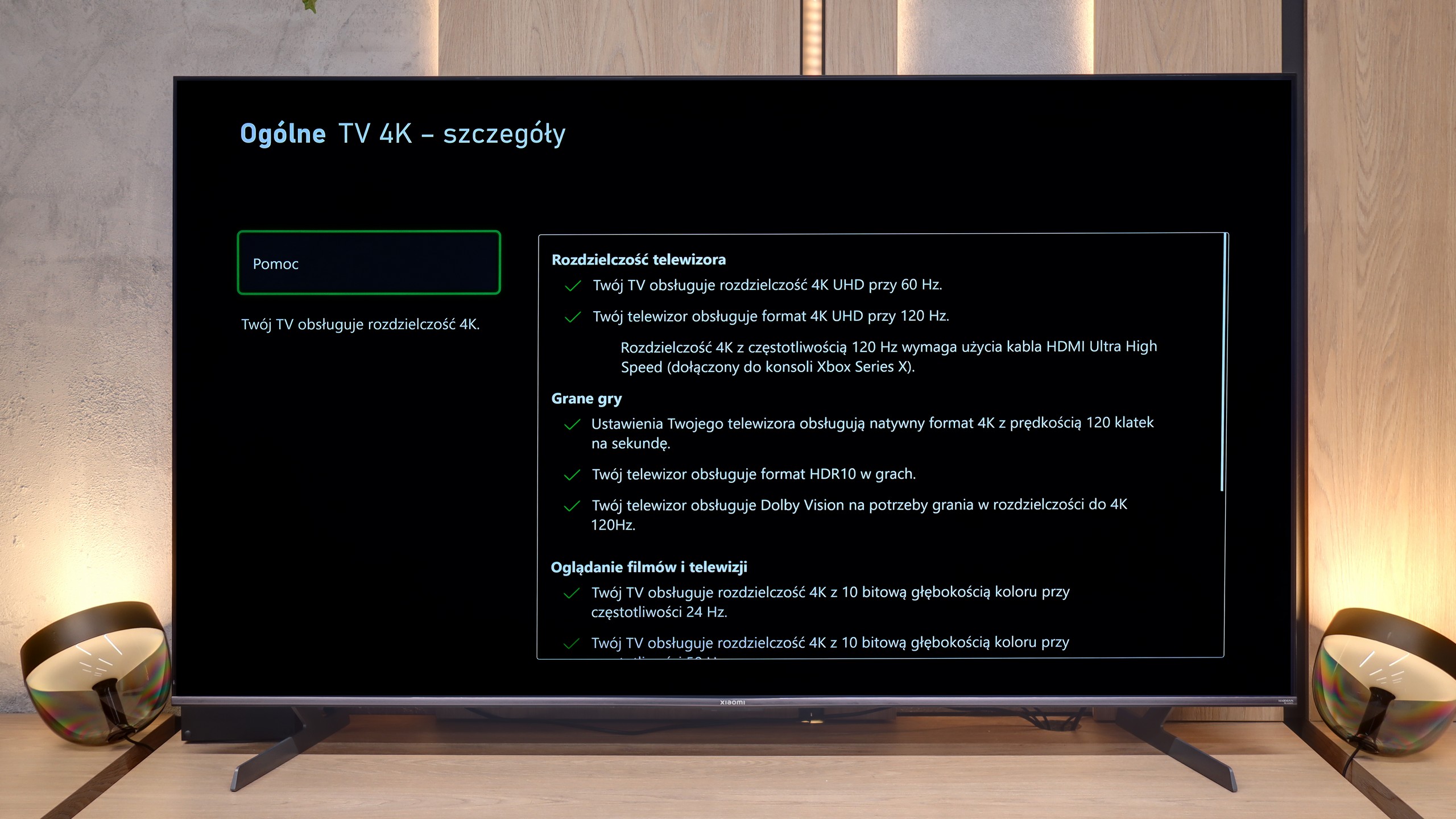
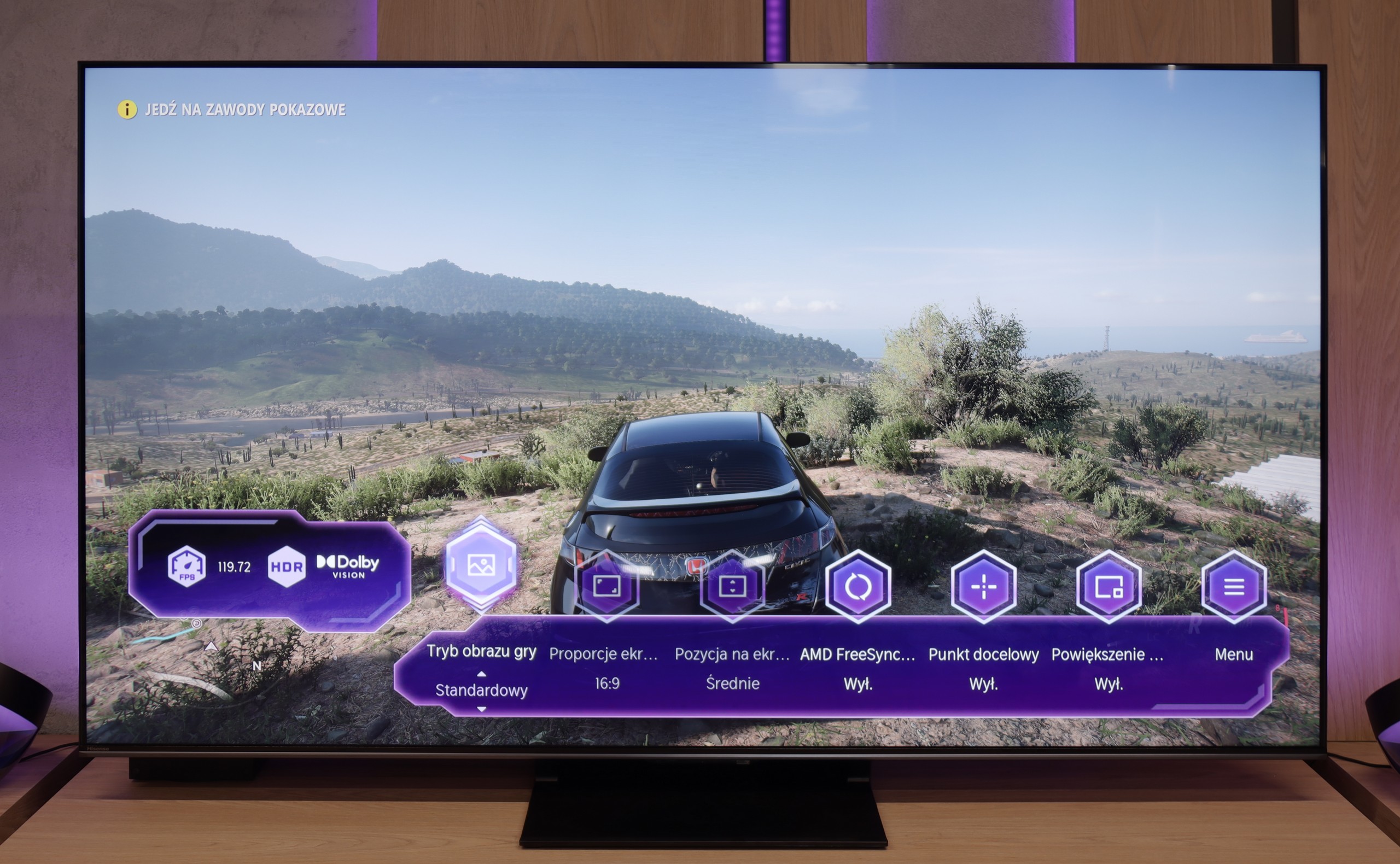


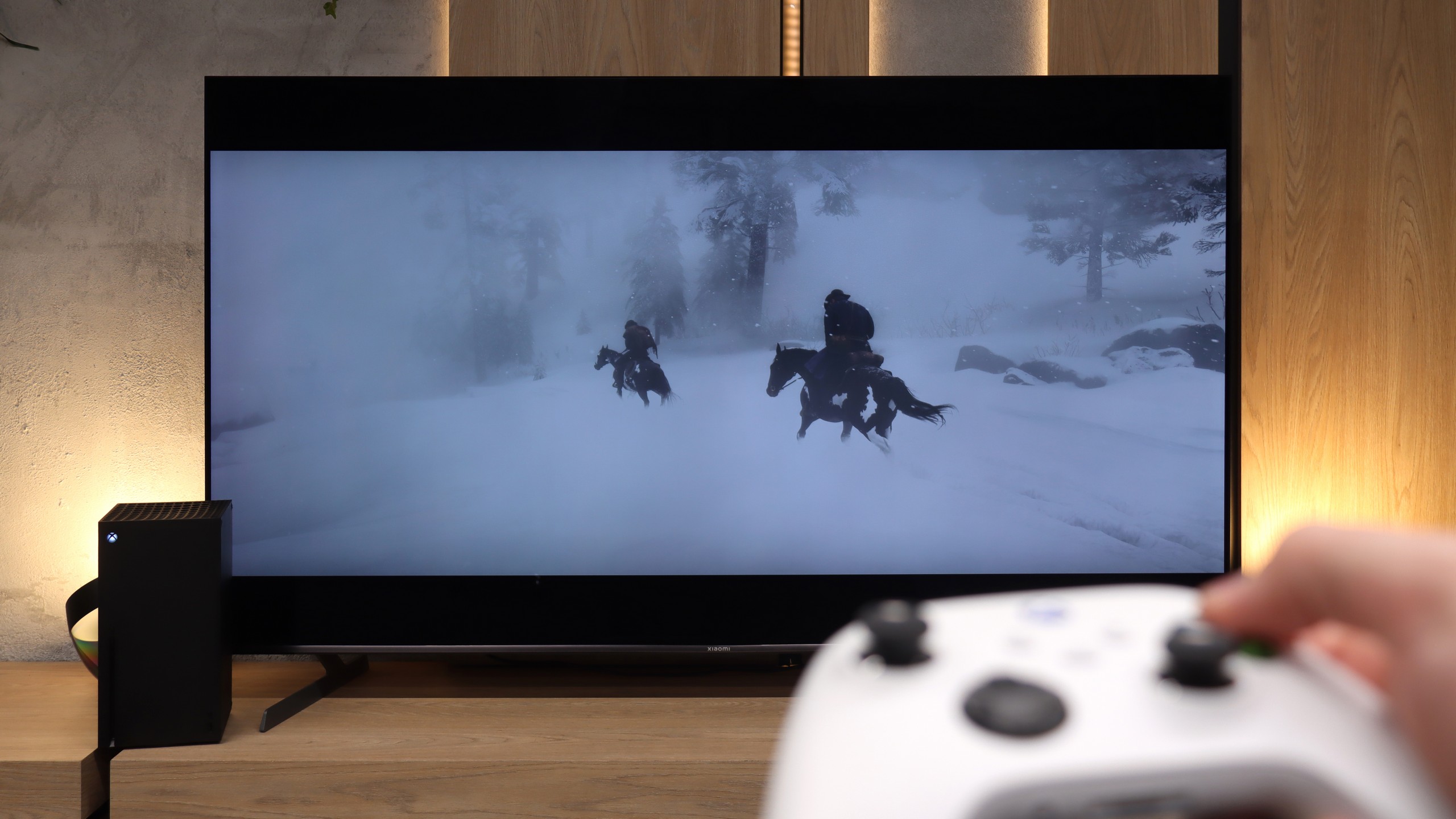
The Hisense U7Q PRO is a television that seems almost designed with gamers in mind. It has practically everything one could expect from a gaming display: variable refresh rate (VRR), automatic low latency mode (ALLM), and as many as four HDMI 2.1b ports with full bandwidth of 48 Gb/s. Additionally, there is a clear and quite functional Game Bar, as well as a well-implemented Dolby Vision GAMING mode that works seamlessly with Xbox Series S and X consoles.
Sounds like perfection? Well, almost. Unfortunately, Hisense has still not implemented the HGiG feature, which means the system limitation of tone mapping on the television side. This means that when configuring HDR brightness on the console, we do it "by eye" or search for settings in online guides, as the display does not show the actual range of its brightness. It’s a pity – because HGiG indeed makes it easier to match the console to the television and helps avoid overexposure or overly dark scenes in HDR games.
Fortunately, the other features work very well. Input lag is low, responsiveness is excellent, and the handling of other functions is impeccable. And while not everything worked perfectly, the U7Q PRO can still be recommended to gamers without hesitation.
For gamers, the Xiaomi S Pro 2026 is almost an ideal proposition on paper. It is equipped with two HDMI 2.1 ports, which allow us to unlock (although these options are somewhat hidden in the menu) the full package of features: ALLM, VRR and, crucially, the ability to work in 4K at 144 Hz. This last feature should particularly please the owners of powerful PCs. The television also has something resembling a gamer panel – and although it's hard to call it a fully-fledged "Gamebar", it serves its purpose by displaying key information. It’s just a shame that in its default form, it obscures a relatively large portion of the screen.
The biggest issue we have with this model, however, concerns how the S Pro 2026 handles games in HDR mode. To put it bluntly: it doesn’t handle it well at all. Due to the television having a poorly implemented HGiG feature (the HDR tone mapping standard for games), it is very easy to "overexpose" the image during initial HDR calibration on the console. If someone is unaware of this software flaw and follows the on-screen instructions, they will simply set the image incorrectly, resulting in burnt-out details in the bright areas. Another major problem is the Dolby Vision mode for games. While it does work, it generates such a high input lag that it becomes noticeable in dynamic titles. (You can check all our lag measurements in the paragraph below). In summary: Generally speaking, this is a really very good screen for gamers, but with one small caveat. We would rather avoid using HDR mode on it – unless we decide to manually set the brightness bar on the console "by eye", completely ignoring the instructions from the console’s pictogram.
Input lag
9.8/10
8.5/10
SDR
HDR
Dolby Vision
In terms of signal latency, the Hisense U7Q PRO performs really well. For 120 Hz content, the input lag remains below 10 ms, which translates to a lightning-fast response – the screen almost instantly reacts to our movements, something console and PC gamers will particularly appreciate. With 60 Hz content, the situation is somewhat worse, as the response time doubles – this is natural and applies to virtually all televisions. Nevertheless, it still remains below 20 ms, which can be confidently considered a very good result, even close to perfection – and in practice, it is hardly noticeable during gaming.
We move on to one of the most important measurements for gamers, namely signal delay (input lag). Overall, the Xiaomi S Pro 2026 performs excellently here. Generally, in game mode, the lag is very low. With 120 Hz content (from consoles or PCs), we easily achieved results below 10 ms. These are truly outstanding results and, in practice, completely imperceptible for most people, even those very sensitive to lag. Unfortunately, there is one "but" that constitutes the biggest flaw of this model in gaming. This is concerning the Dolby Vision Gaming mode. When this mode is activated, input lag rises to an astronomical level of around 100 ms. At this value, the delay between our movements on the controller (we tested on an Xbox console) and what is displayed on the screen becomes really significant and irritating. Therefore, our recommendation is simple: we absolutely do not recommend using the Dolby Vision Gaming mode on this television.
Compatibility with PC
8.2/10
8.6/10
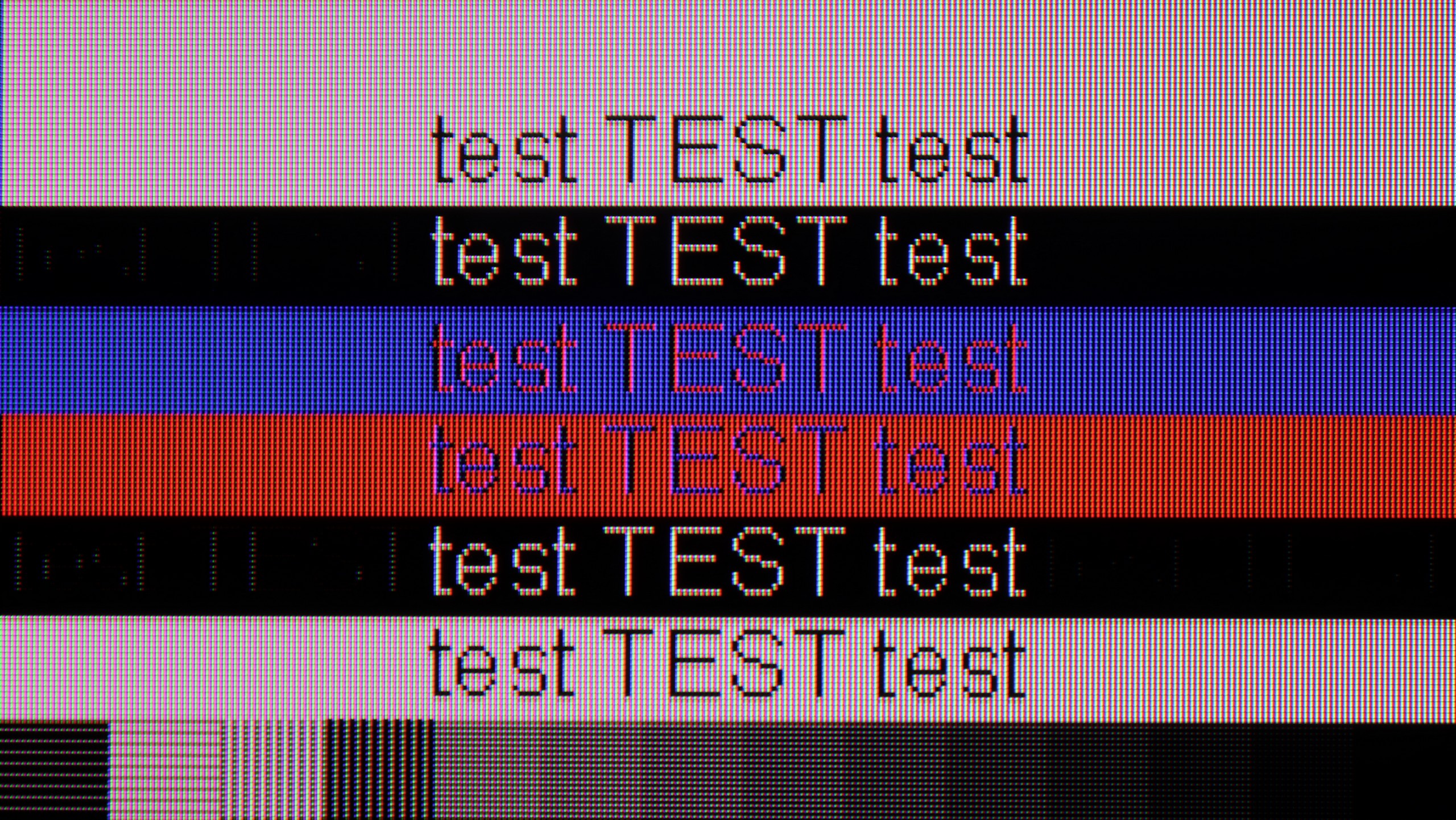
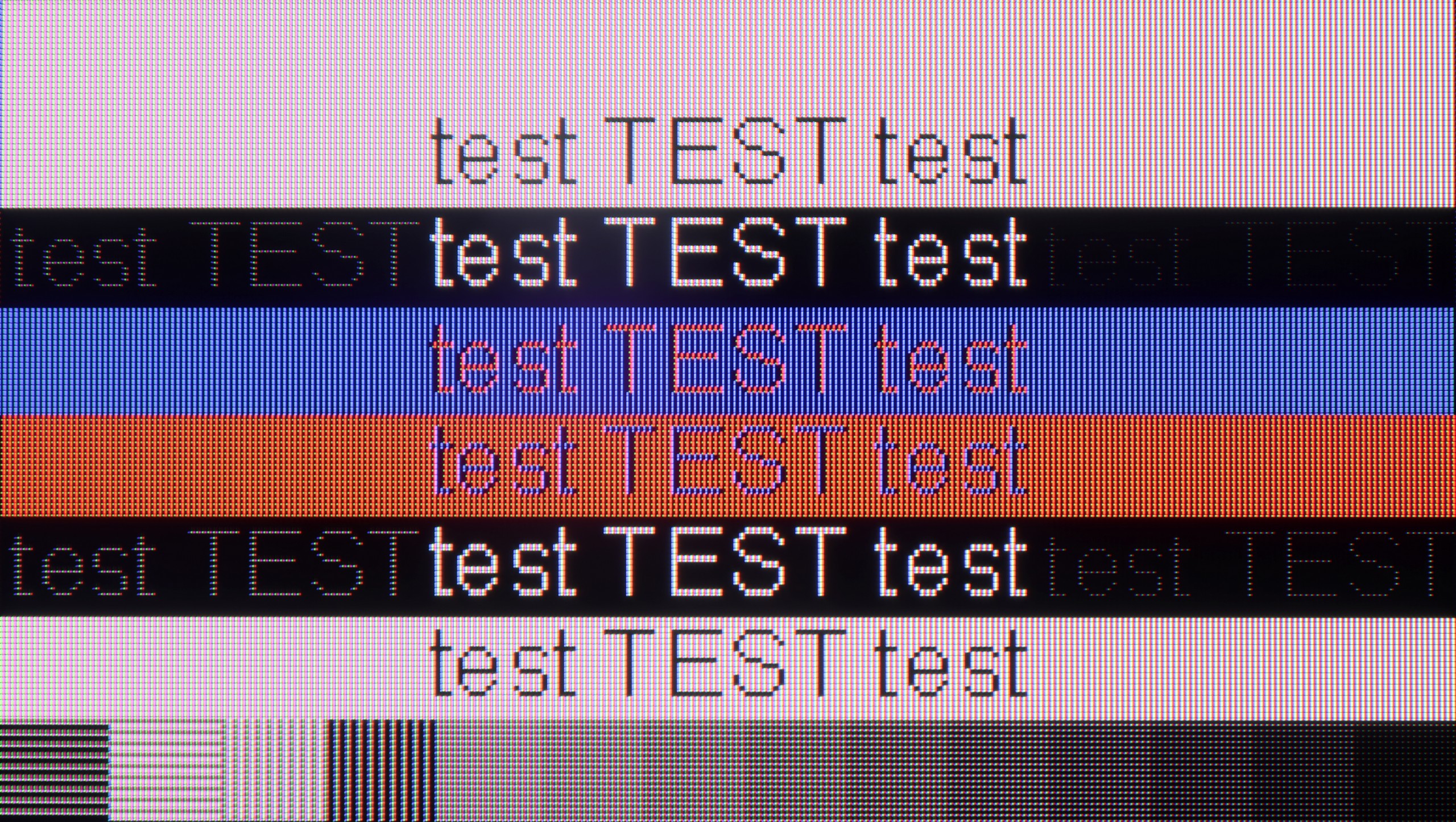
Playing on PC using the Hisense U7Q PRO is pure fun. Low input lag, full 165 Hz in 4K and even 288 Hz in Full HD - these are numbers we wouldn’t expect from a television at this price. In this regard, it’s really hard to fault anything. If someone is looking for a large screen for gaming from a PC - the U7Q PRO can confidently serve as a monitor. It performs slightly worse for everyday work with text. Although chroma 4:4:4 is present, so theoretically everything should look good. But in practice, grey fonts on a dark background look strange – vertical lines are sharp, but horizontal ones can blur, disappear, or appear slightly dimmed. However, it must be honestly added that if you use the television as usual – that is, from a few metres away – you probably won’t notice this. The problem only becomes visible when someone places the U7Q PRO on a desk, a metre from their face, and starts working with text or spreadsheets. If you plan to use it in that way – it’s worth keeping this in mind.
Generally, when it comes to gaming, the S Pro 2026 is a fantastic screen for PC owners. It offers a refresh rate of up to 288 Hz at Full HD resolution or a full 144 Hz at 4K. All of this, supported by technologies such as AMD FreeSync or G-Sync, really caters to very demanding gamers. And what about "desktop" work? Here we have good news. Although the displayed font may not be perfectly sharp (like on a dedicated PC monitor with an IPS panel), it is presented in a really pleasant and readable manner. This is due to the proper implementation of Chroma 4:4:4 sampling, which ensures that text is clear and there are no issues with coloured fringes.
Viewing angles
3/10
3.7/10
In this regard, the U7Q PRO performs moderately. The television is equipped with a VA panel, which inherently is not known for wide viewing angles. When we start looking at the screen at an angle, the image noticeably loses brightness, and the colours begin to wash out. This is a completely normal phenomenon in VA panels without additional coatings that widen the angles – so if you plan to watch from the side or in a larger group, it’s worth keeping this in mind. On the other hand, directly in front – the image looks great, with deep blacks and very good contrast, much better than on IPS/ADS type panels.
As for a television equipped with a VA panel, we must admit that the decrease in brightness when deviating from the screen's axis is relatively small in the Xiaomi S Pro 2026. However, one must remember the second, crucial aspect – colour saturation significantly degrades at angles. This is typical behaviour for televisions with VA panels that do not have additional coatings to widen viewing angles. Is this a downside of this television? Probably not. It's simply a characteristic, the price we have to pay for the key qualities of a VA panel in the form of its high native contrast.
Daytime performance
6.2/10
7.4/10
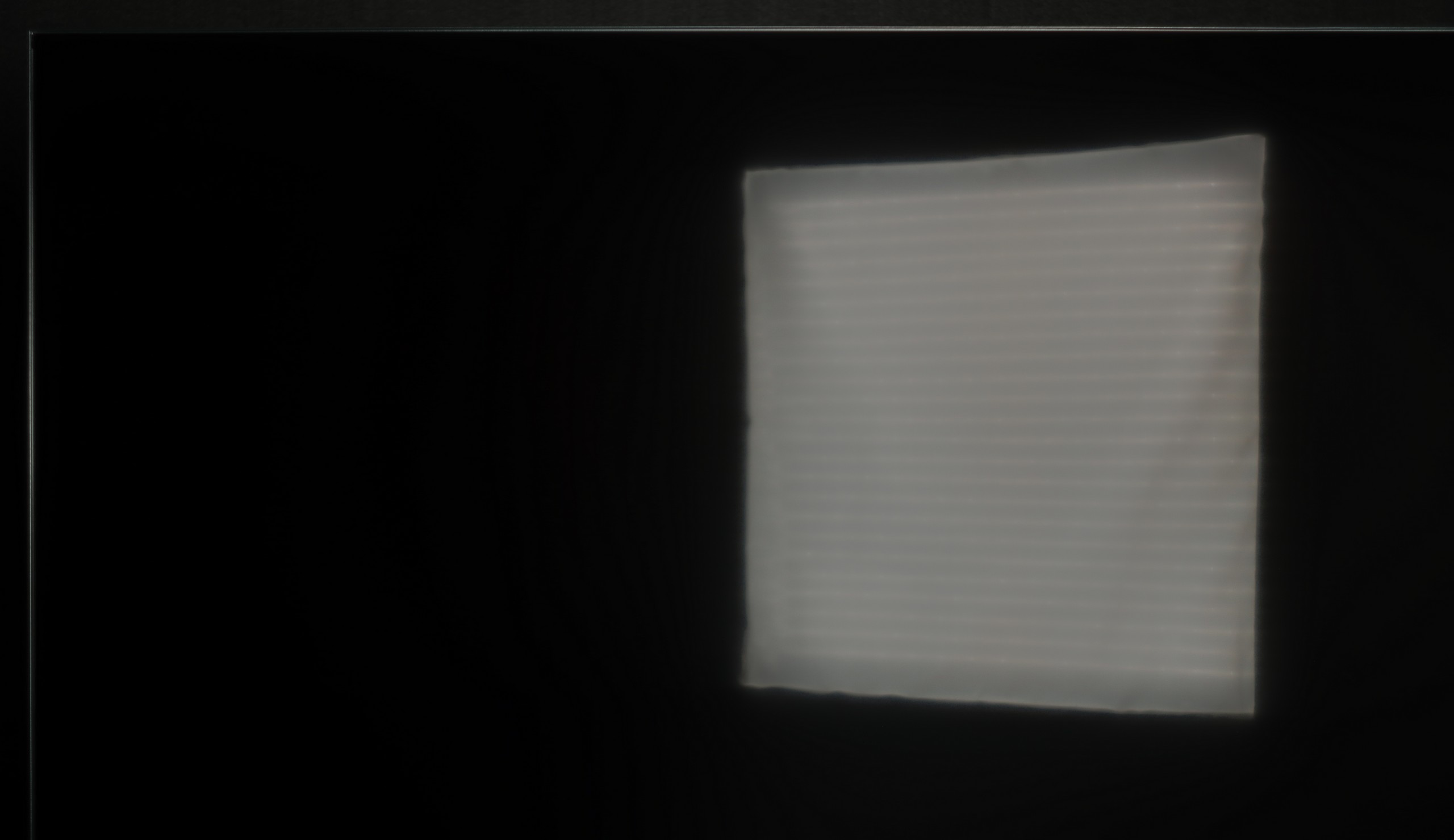
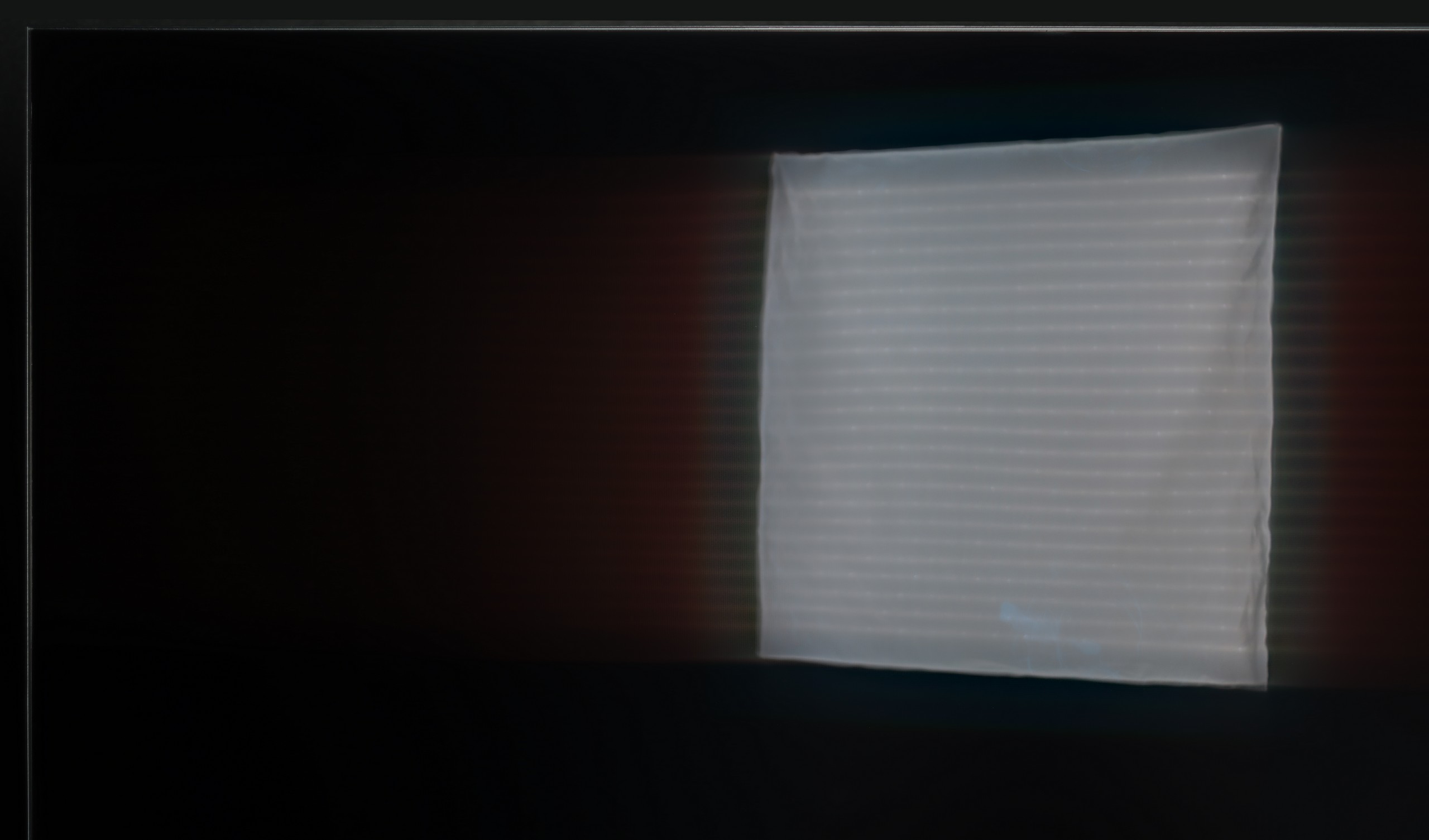


Panel brightness
Average luminance SDR
Xiaomi S Pro 2026: 771 cd/m2
Hisense U7Q PRO: 472 cd/m2
As we mentioned earlier – the U7Q PRO is really a bright television, especially when it comes to HDR content. For SDR material, the television dims a bit, but an average brightness of around 500 nits is still a very solid result. This means that it's easy to watch television or movies even in quite a bright room. Only in very extreme lighting conditions – for example, strong sunlight directly on the screen – can visibility be somewhat affected. Fortunately, Hisense has applied a satin anti-reflective coating that effectively suppresses reflections, and the blacks retain their depth even during the day. This makes a difference and allows for comfortable use of the television in various lighting conditions.
Due to its very high peak brightness, the Xiaomi S Pro 2026 performs exceptionally well in brightly lit rooms. In most scenarios, it is capable of "cutting through" even very strong room lighting. However, it should be noted that the matrix used here averages out in terms of reflecting light. This means that in darker areas of the image, or when the television is displaying a dark scene, direct reflections (e.g. the reflection of a window or lamp) may be annoying. Nevertheless, the S Pro 2026, as a television for a bright living room, will perform very well indeed, thanks to its tremendous brightness.
Panel details
Subpixel Structure:
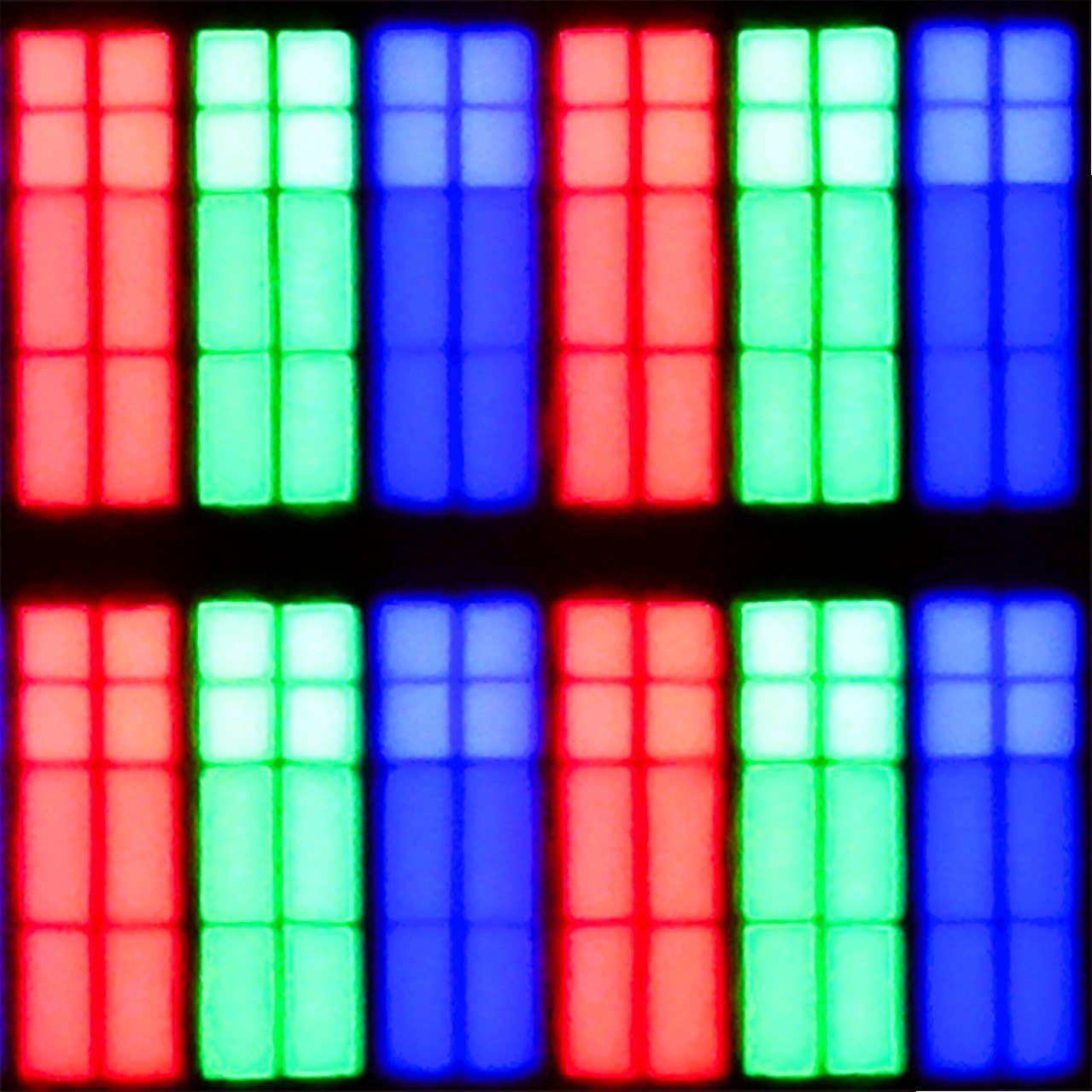
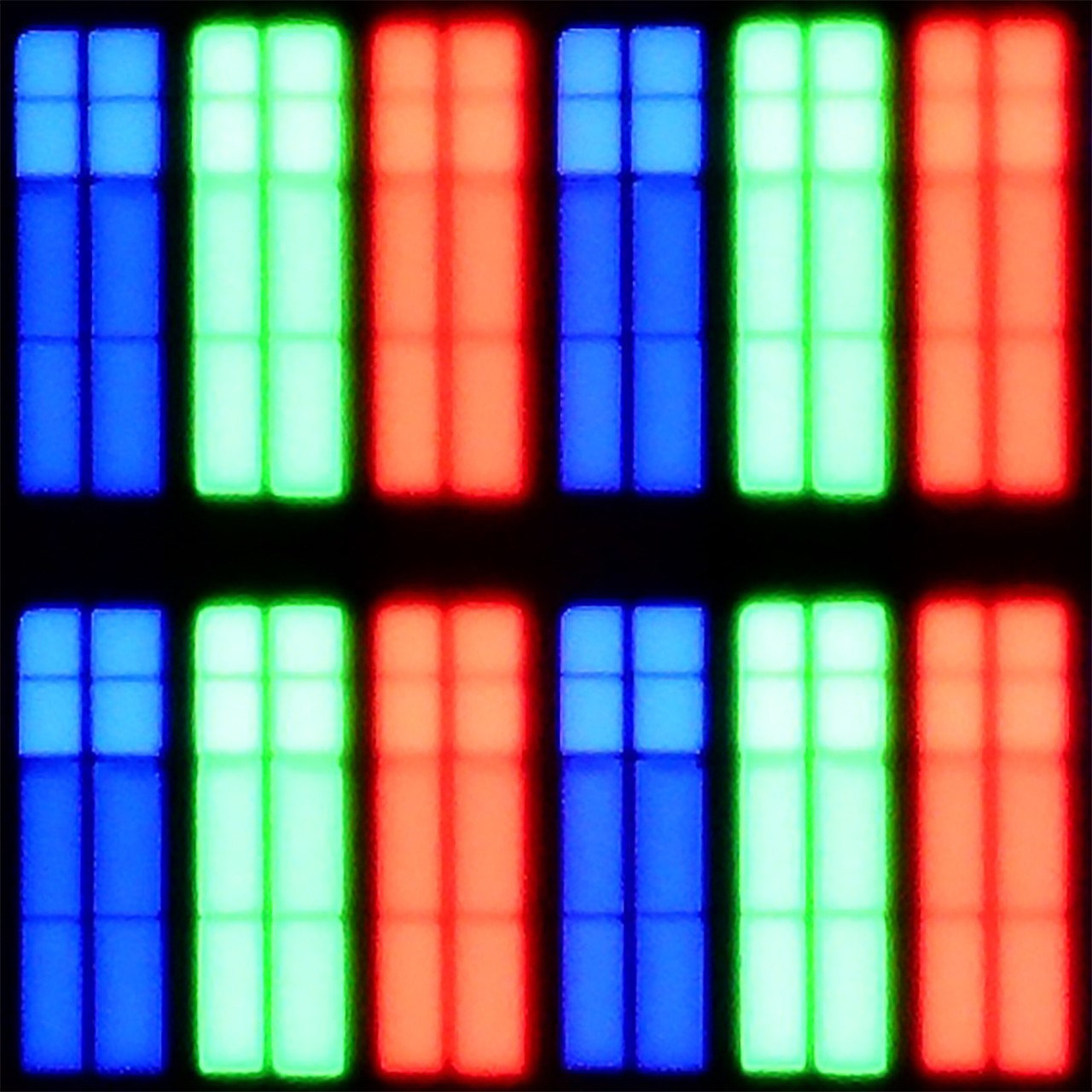
Panel uniformity and thermal imaging:


Hisense U7Q PRO
Xiaomi S Pro 2026
TV features
9.4/10
7.2/10
- HDMI inputs0 x HDMI 2.0, 4 x HDMI 2.1 48Gbps1 x HDMI 2.0, 2 x HDMI 2.1 48Gbps
- Other inputsRCA (Chinch)
- OutputsToslink (Optical audio), eARC (HDMI), ARC (HDMI), Mini-Jack (Headphones)Toslink (Optical audio), eARC (HDMI), ARC (HDMI), Mini-Jack (Headphones)
- Network InterfacesWi-Fi 2.4GHz, Wi-Fi 5GHz, Ethernet (LAN) 100MbpsWi-Fi 2.4GHz, Wi-Fi 5GHz, Ethernet (LAN) 100Mbps
- TV receptionDVB-T, DVB-T2, DVB-S, DVB-S2, DVB-CDVB-T, DVB-T2, DVB-S, DVB-S2, DVB-C
Classic features:
- Recording to USB (terrestrial TV)
- Recording programming
- Picture in Picture (PiP)
- RF remote control (no need to aim at the screen)
- Backlit remote control
- Teletext
- Audio only mode
- Bluetooth headphones support
- Simultaneous Bluetooth headphones & TV audio
Smart features:
- AirPlay
- Screen mirroring (Windows Miracast)
- Voice search
- Voice search in native language
- Ability to connect a keyboard and mouse
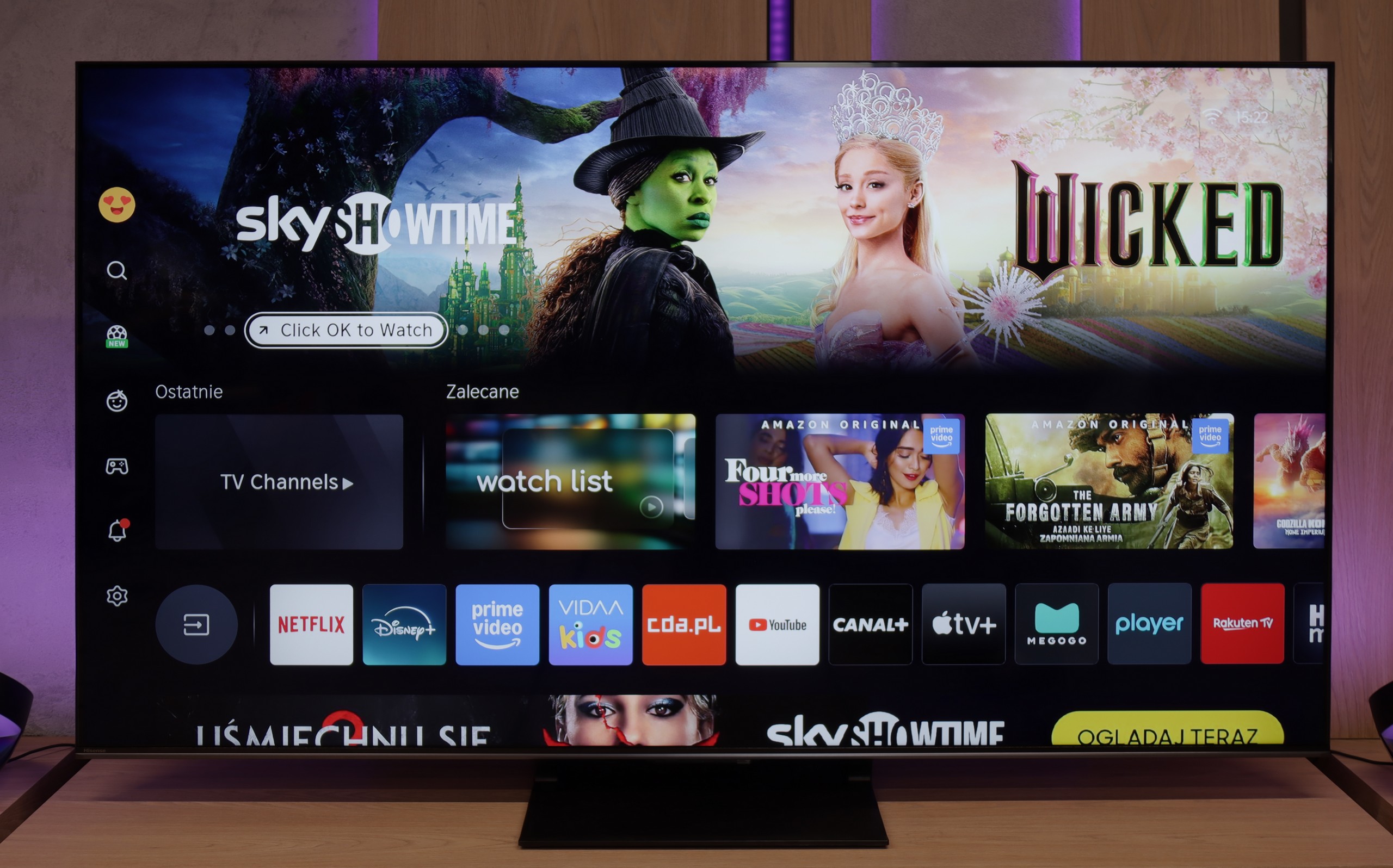
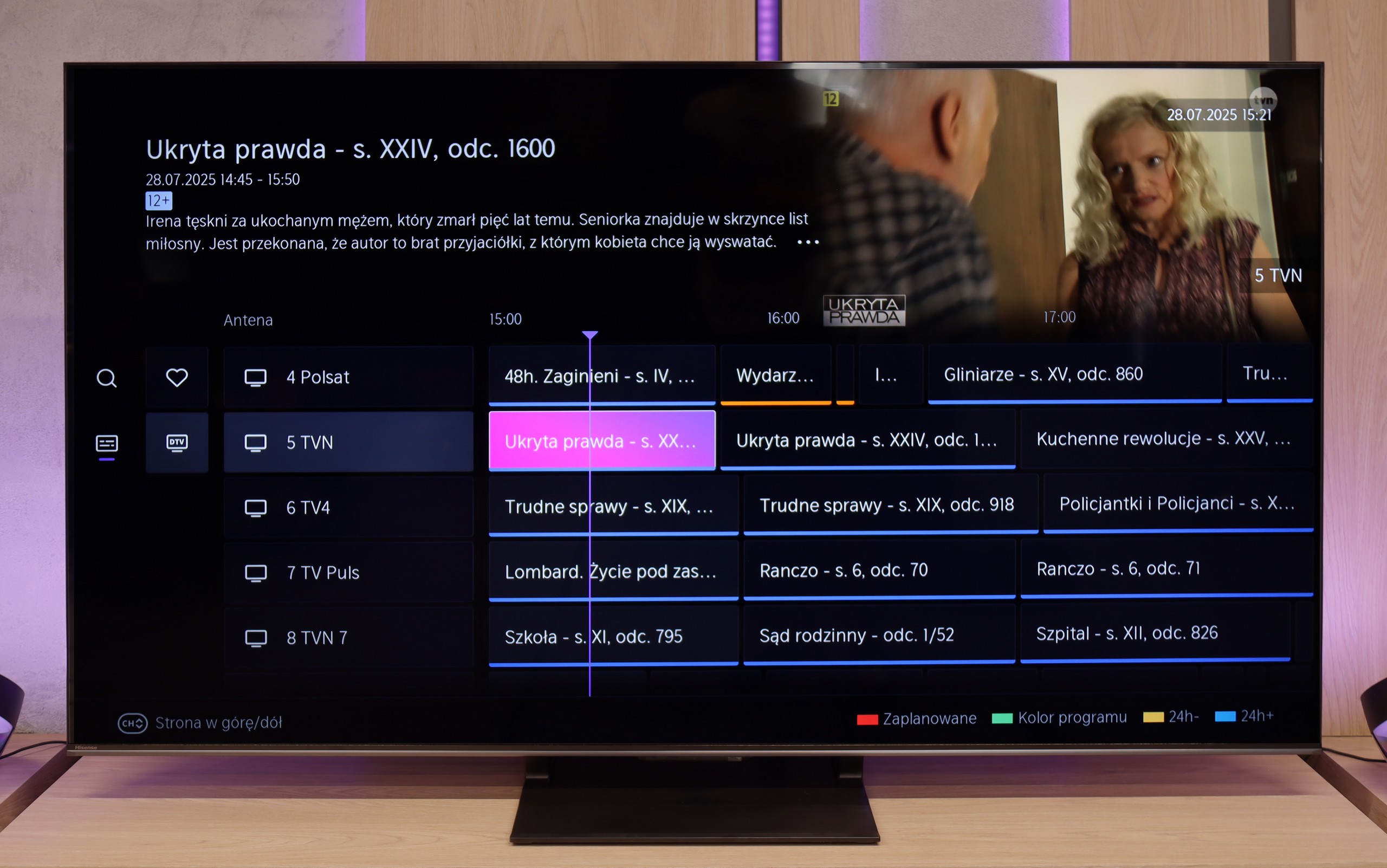
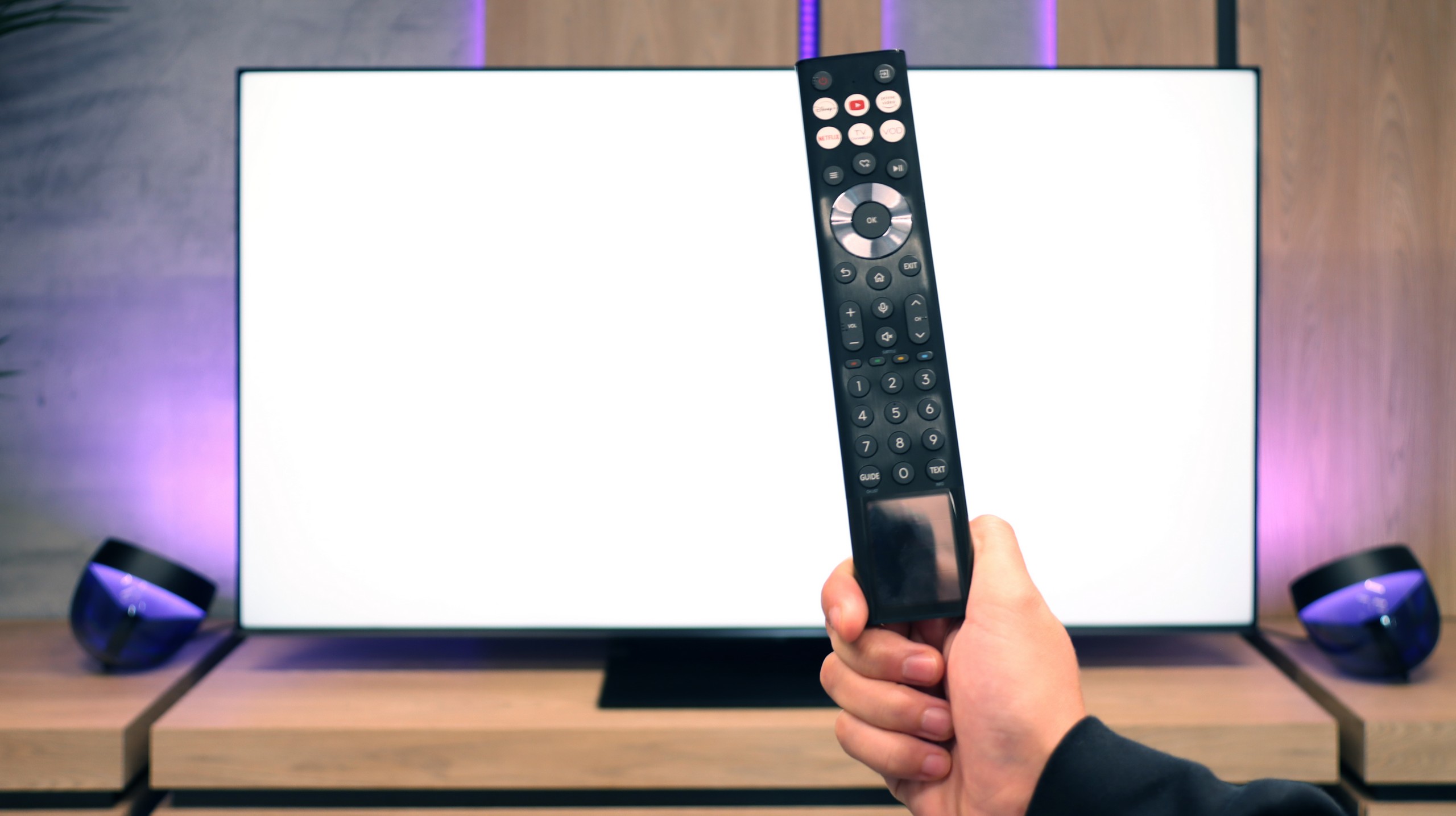
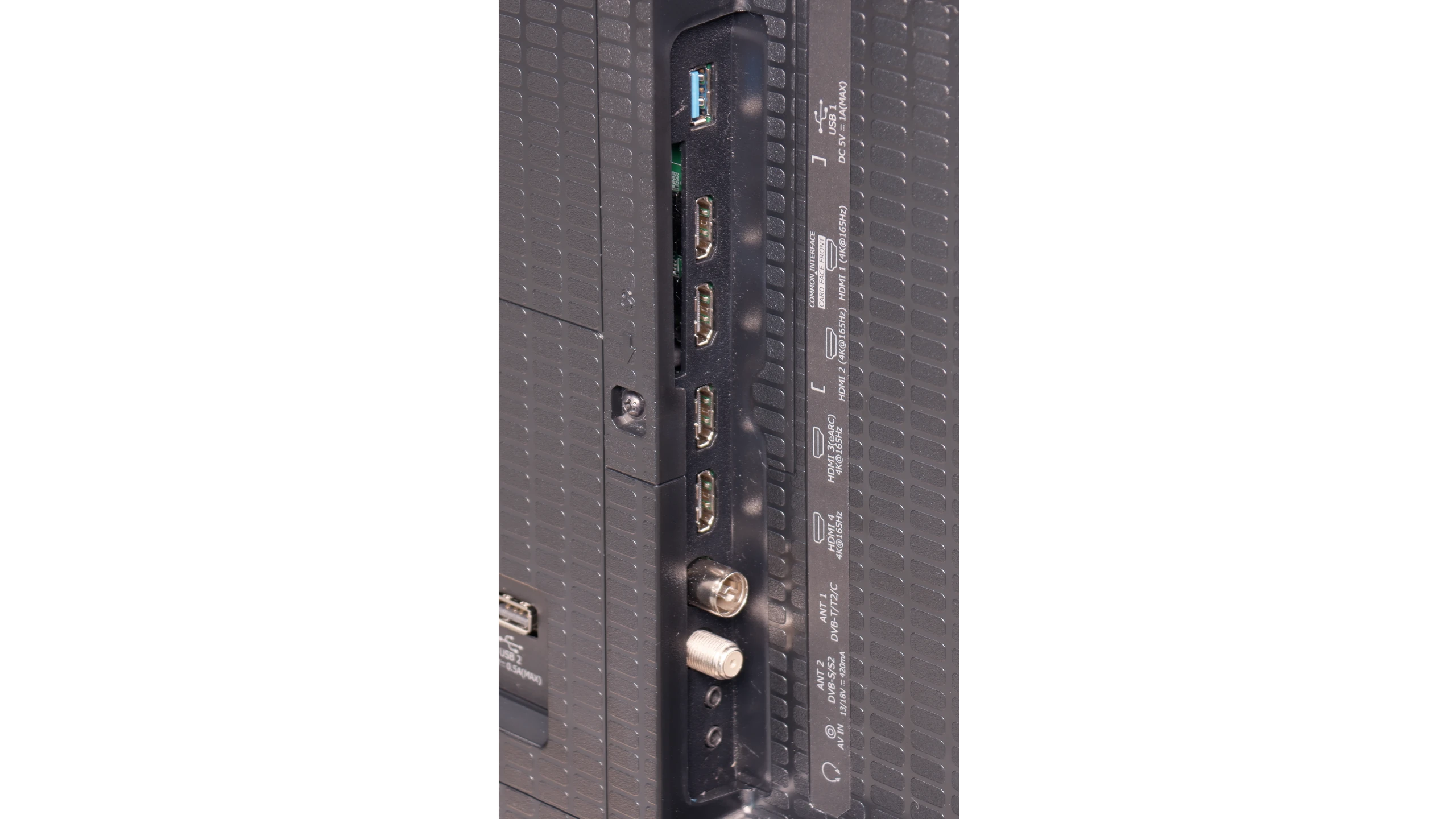
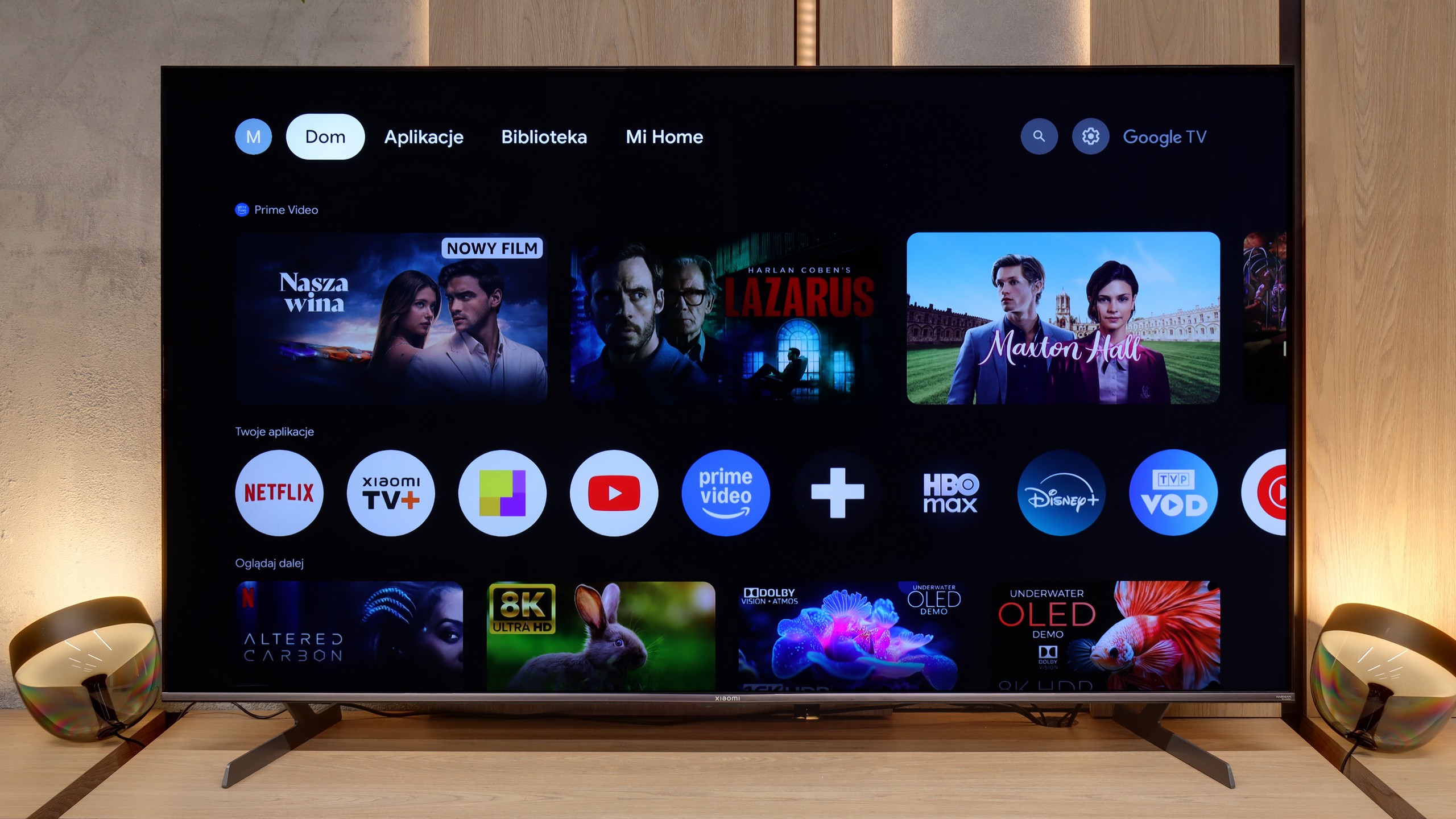
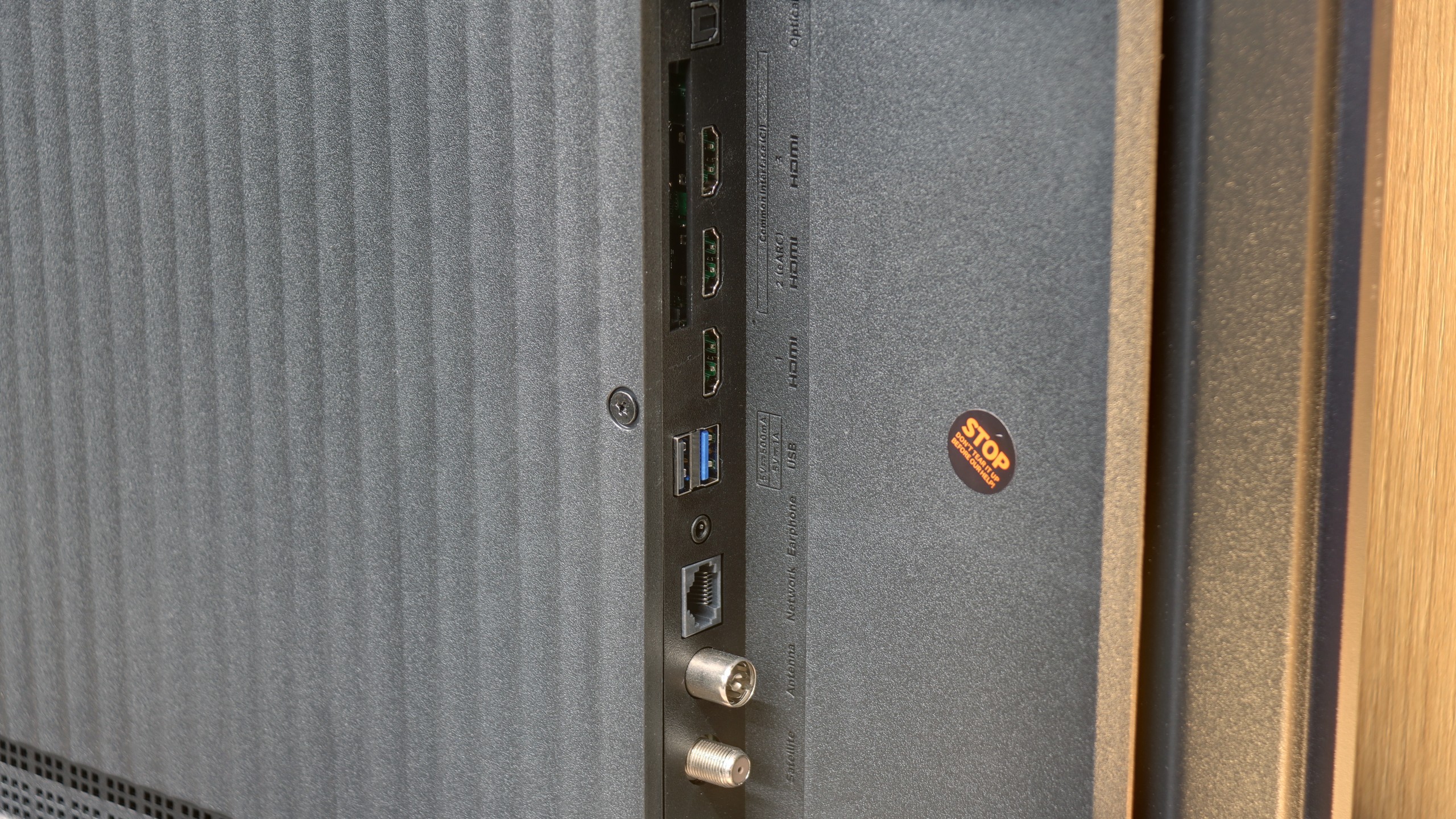

Classic Features of U7Q PRO
If you plan to use the television in a more "classic" way, that is, for watching daily programs or connecting headphones, the Hisense U7Q PRO has almost everything you might expect. The television easily supports recording to USB, you can connect headphones via Bluetooth, and the remote control is backlit, which still isn't standard even in more expensive models. Although many people today forgo these classic features in favour of streaming applications, it's good to know that the U7Q PRO still does this properly and without compromises (apart from the lack of PiP functionality).
SmartTV System: Vidaa
When it comes to smart features, this model operates on the VIDAA system in Europe. The system runs smoothly, has a built-in web browser, supports voice control (also in Polish), and AirPlay, which will delight users of Apple devices. However, it's worth noting that VIDAA is a closed system, so you won't find all the popular applications that we have gotten used to with Android TV or Google TV. Before purchasing, it's advisable to check if the apps you actually use are available.
Operating System (Google TV)
The enormous advantage of the Xiaomi S Pro 2026 is undoubtedly the presence of the Google TV system. This gives us access to a gigantic library of applications – we can find literally everything here, from leading VOD platforms to niche players. The system also offers a plethora of useful features, such as a built-in Chromecast, support for AirPlay and Screen Mirroring, as well as an efficiently functioning voice search. The Google TV system itself is great, but one must take a slight grain of salt with its implementation by Xiaomi. During our tests, it occasionally exhibited what could be described as a "breathlessness." Animations could stutter slightly, and the response to commands was not immediate. This is certainly not the level of fluidity that we are accustomed to with top-tier, significantly more expensive models equipped with more powerful processors.
Television Features and Connectivity
How does the S Pro 2026 perform as a "regular" television? Unfortunately, here we have less good news. In terms of traditional television viewing, we can only commend this model mainly for having a convenient remote control with a numeric keypad – which (surprisingly) is not a standard today. However, this is where the conveniences end. We will not find either USB recording functionality (PVR) or a PiP (Picture-in-Picture) option. On the plus side, we appreciate the extensive Bluetooth connectivity options. We were able to connect external devices to the television, such as wireless headphones, a keyboard, or a mouse, without any issues, which significantly simplifies operation.
Playing files from USB
8.2/10
6.8/10
Supported photo formats:
Maximum photo resolution:
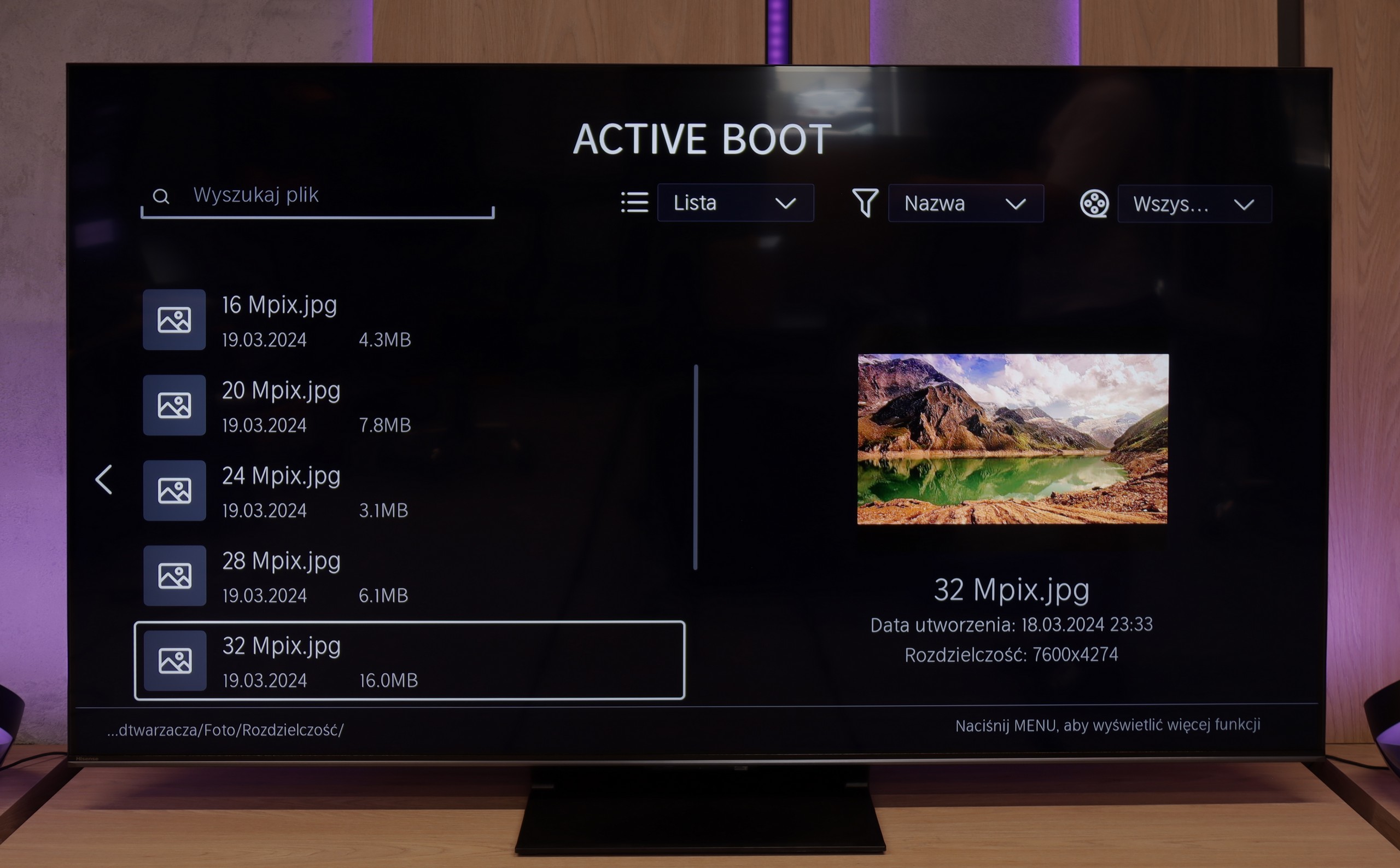

The built-in media player in the VIDAA system functioned very efficiently and without issues on our U7Q PRO unit. The television effortlessly read external video and audio files, as well as subtitles, making it convenient to watch films from a USB stick or external drive. Most popular formats worked flawlessly, so there was no need to convert anything. The only drawback was a certain selectivity in handling high-resolution images – not all of them opened. Therefore, you will find a detailed list of supported photo resolutions (Mpix) in our comparison table.
The built-in, default media player in the Xiaomi S Pro 2026 is – given the capabilities of the Google TV system – simply weak. Its biggest drawback is the fact that it does not support characters other than those from the standard alphabet. As a result, it does not display, among others, Polish fonts in subtitles or file names. Fortunately, as we have already mentioned, the heart of the television is Google TV. This system allows for the quick installation of an external, significantly better player, such as VLC or Kodi. For this television, we recommend installing an alternative player immediately after the first start-up.
Apps
7.7/10
9.6/10














































Sound
7.8/10
7.1/10
- Maximum volume85dB82dB
- Dolby Digital Plus 7.1
- Dolby True HD 7.1
- Dolby Atmos in Dolby Digital Plus (JOC)
- Dolby Atmos in Dolby True HD
- DTS:X in DTS-HD MA
- DTS-HD Master Audio
Considering the standards of built-in television speakers, the U7Q PRO sounds surprisingly good. The sound is clear, with distinct mid and high tones, and the bass – although limited – doesn’t completely disappear. It can be said that for "television speakers," the level is more than satisfactory. However, it's worth noting that in our test unit we could not play sound in DTS:X format from local files – the television simply does not support it. This means that if you are counting on a cinematic spatial effect solely from its built-in speakers, there might be a certain disappointment. Fortunately, the television smoothly passes the DTS signal to an external amplifier, so if you have a home cinema – just connect it and everything works as it should.
We have to admit that the S Pro 2026 has pleasantly surprised us. The television is equipped with a 30W speaker system, which, for its class, sounds really very good. There is even a noticeable hint of bass, and the mid and high tones are quite well balanced. Of course, all of this is within the capabilities of what the television's speakers can deliver, yet it is a level we did not expect from such a relatively inexpensive model. A huge plus is also the support for top audio technologies. The television is capable of decoding not only the very popular Dolby Atmos format but also the recently quite rarely seen DTS:X, which we mainly find on Blu-ray discs.
Sound Quality Test
Acoustic Measurements
85dBC (Max)
75dBC
82dBC (Max)
75dBC
